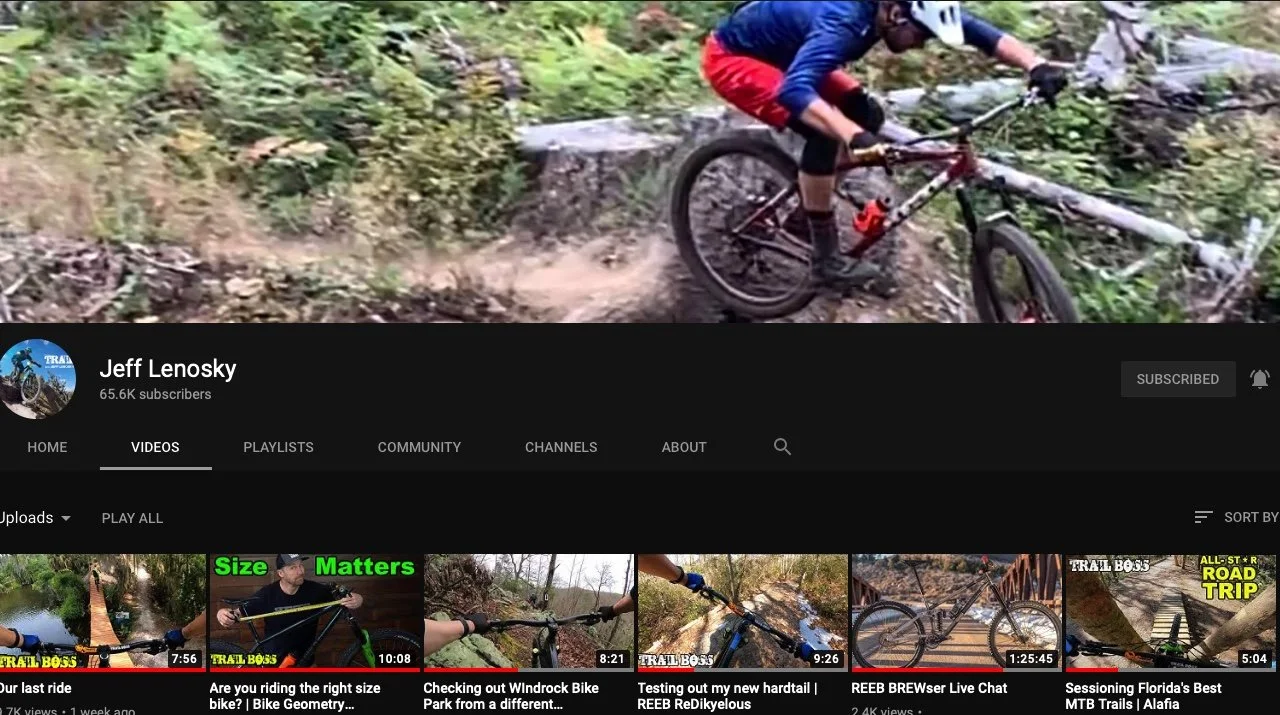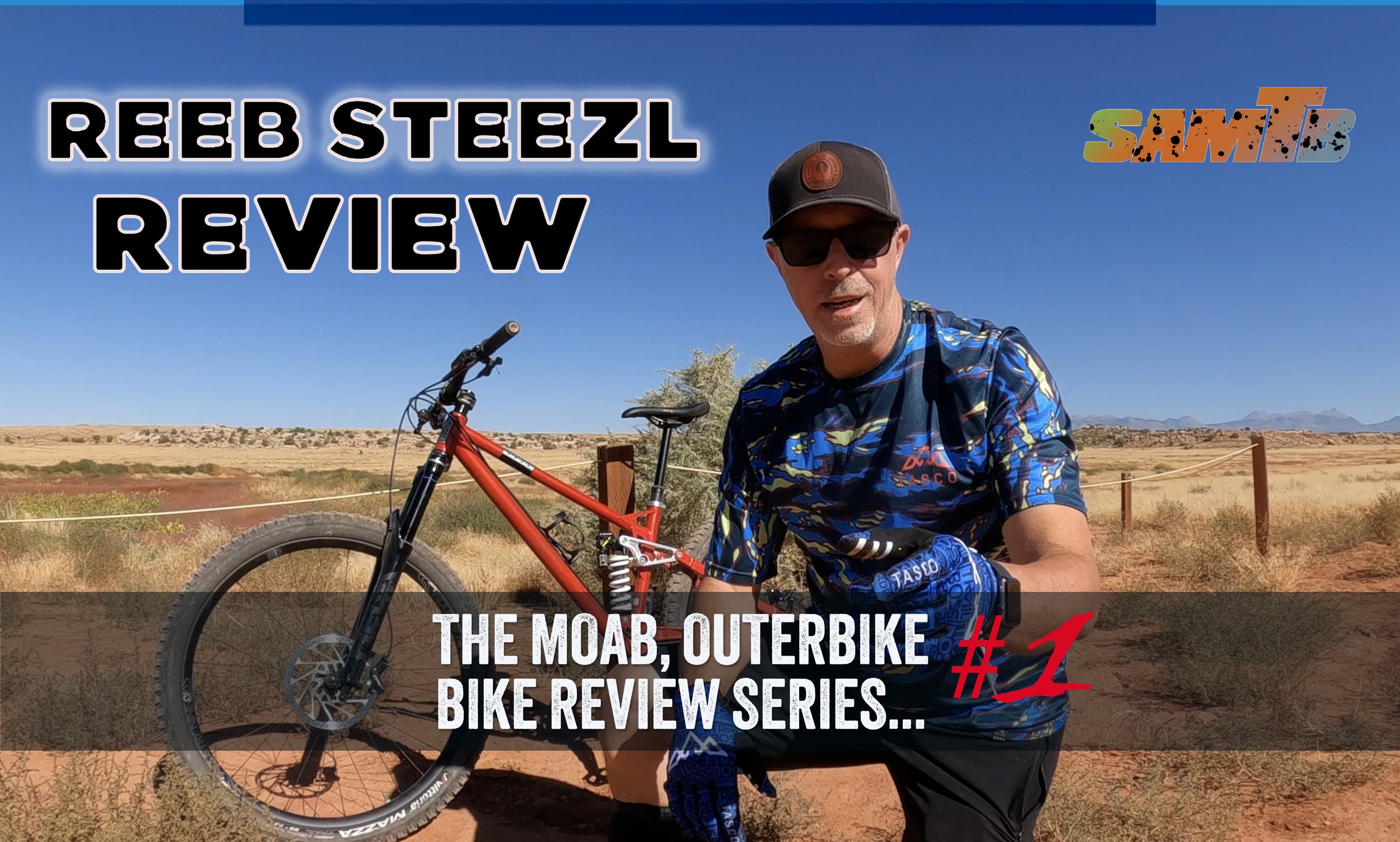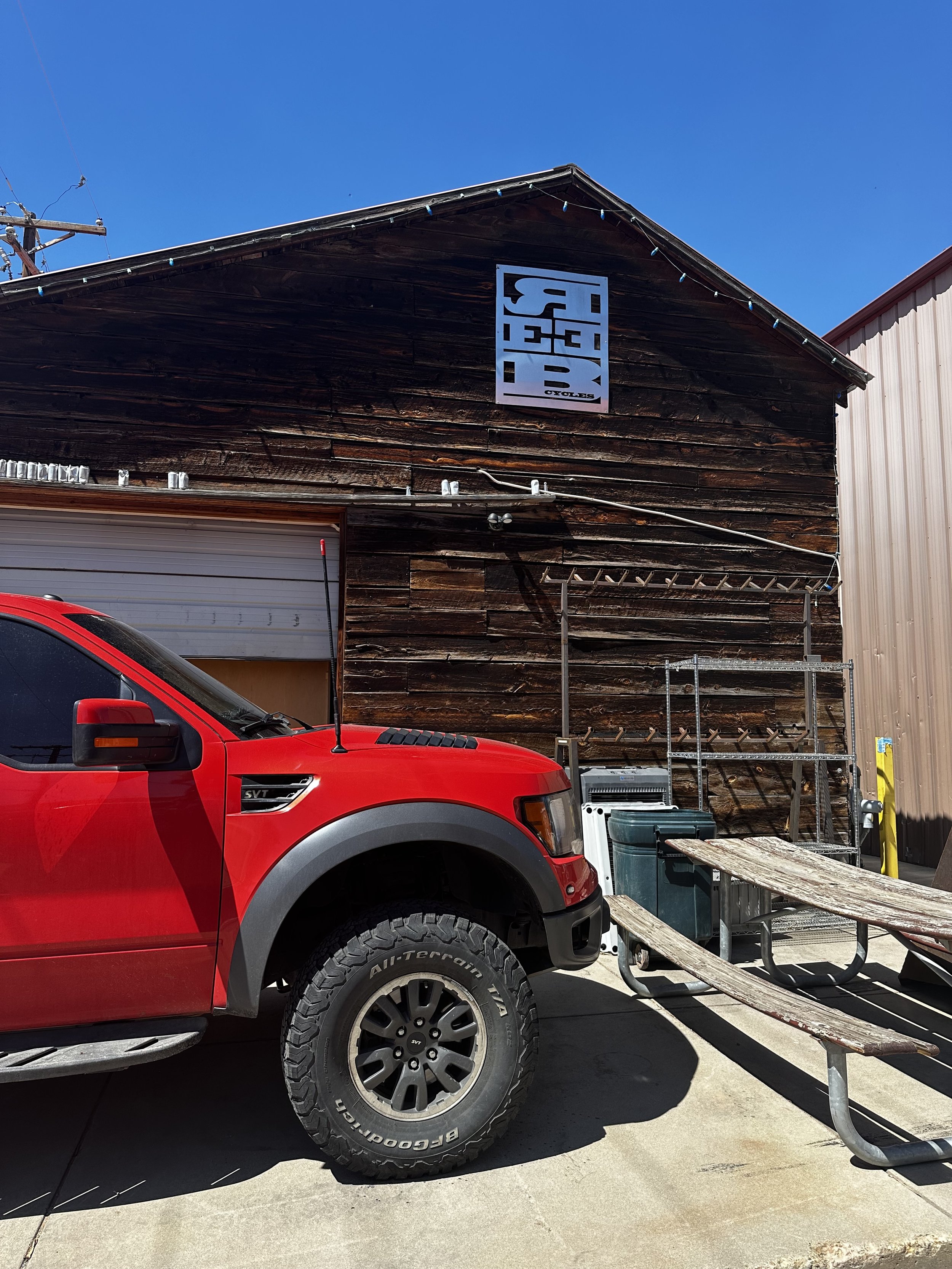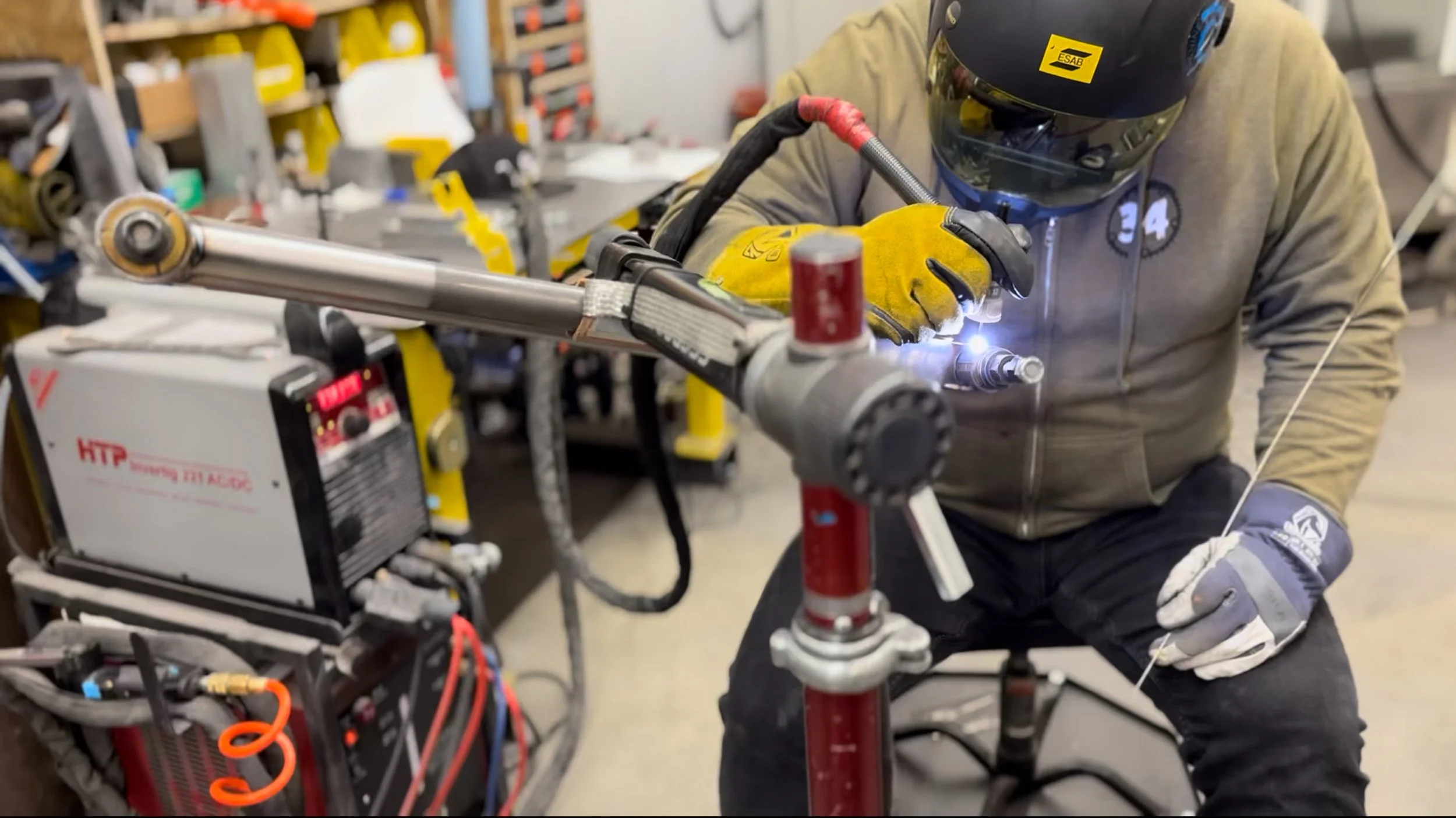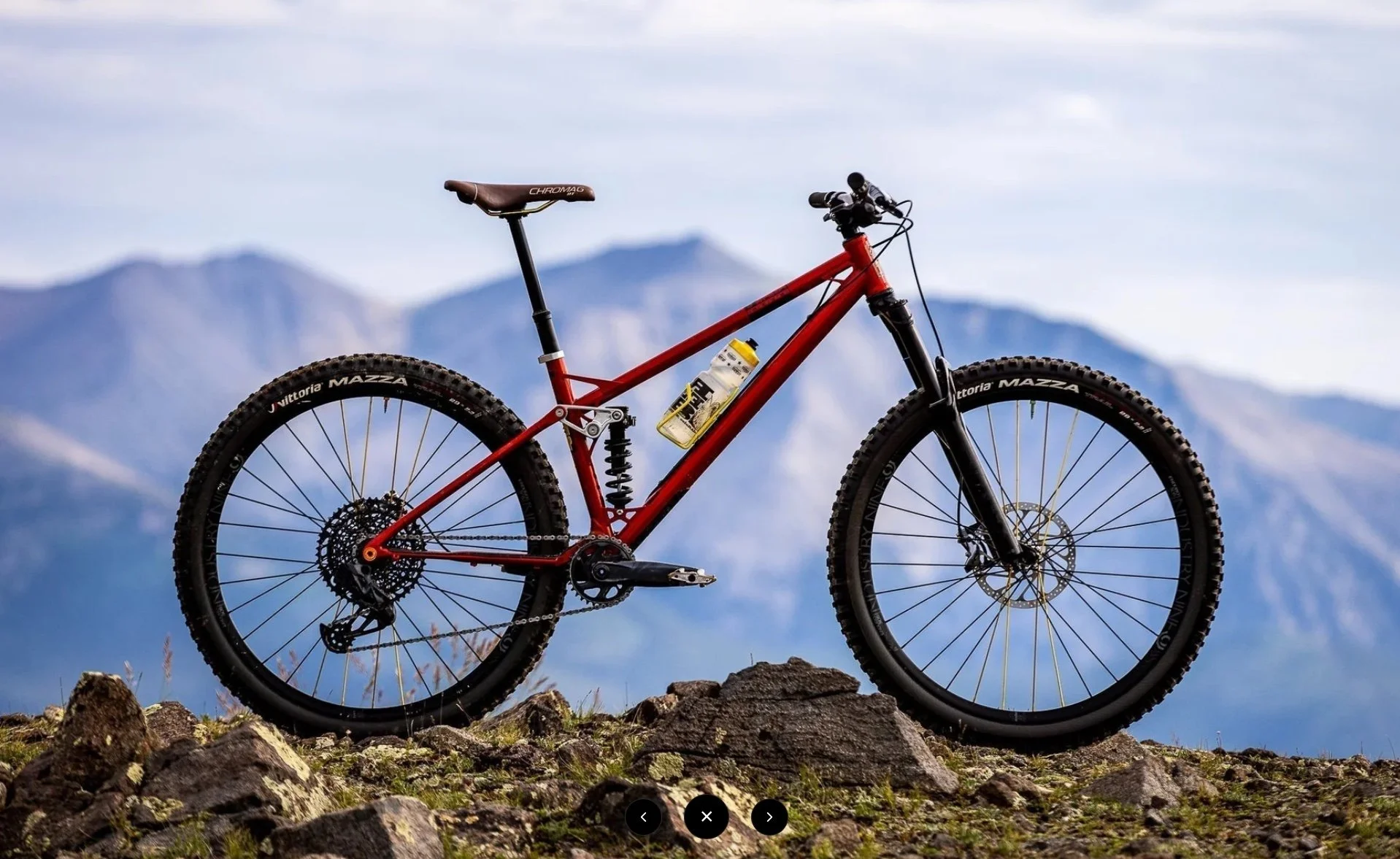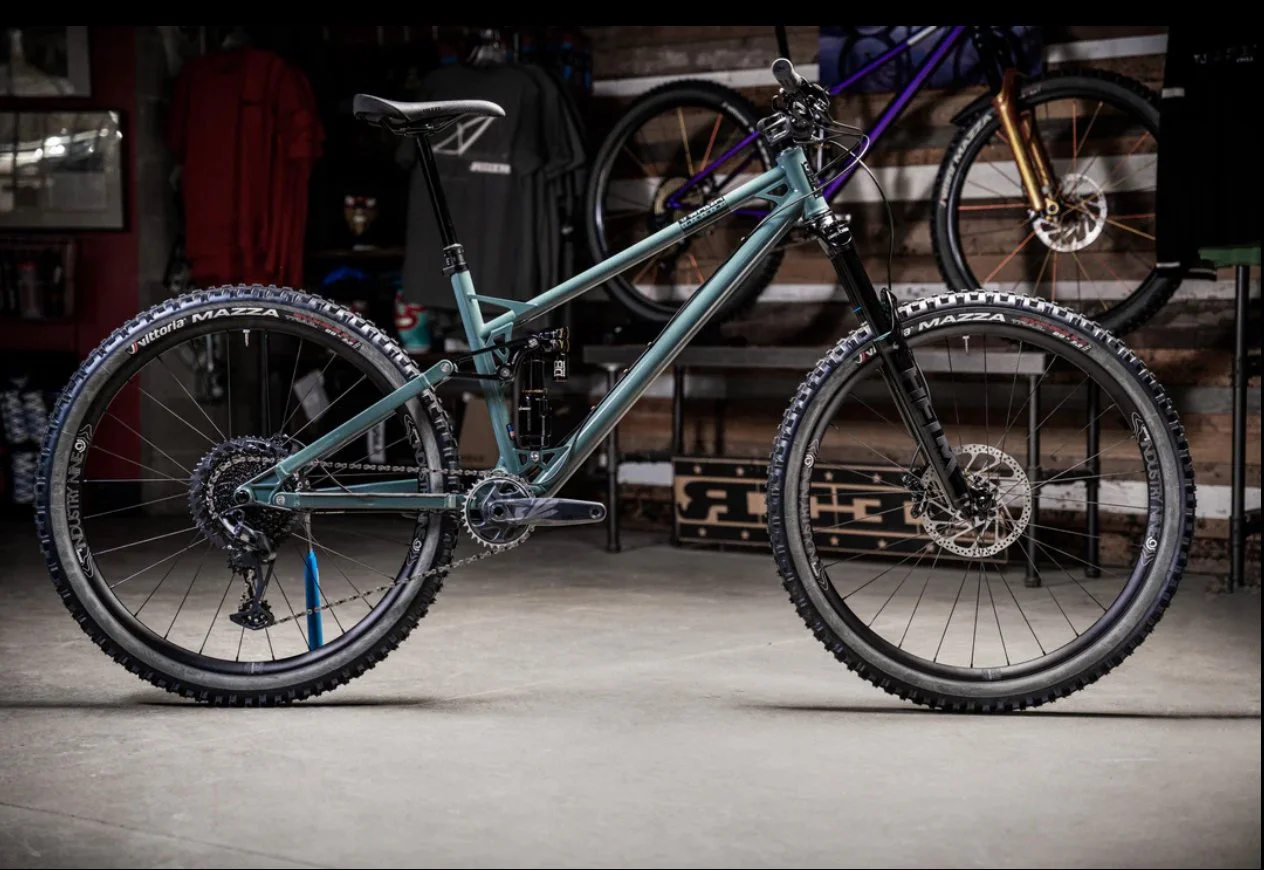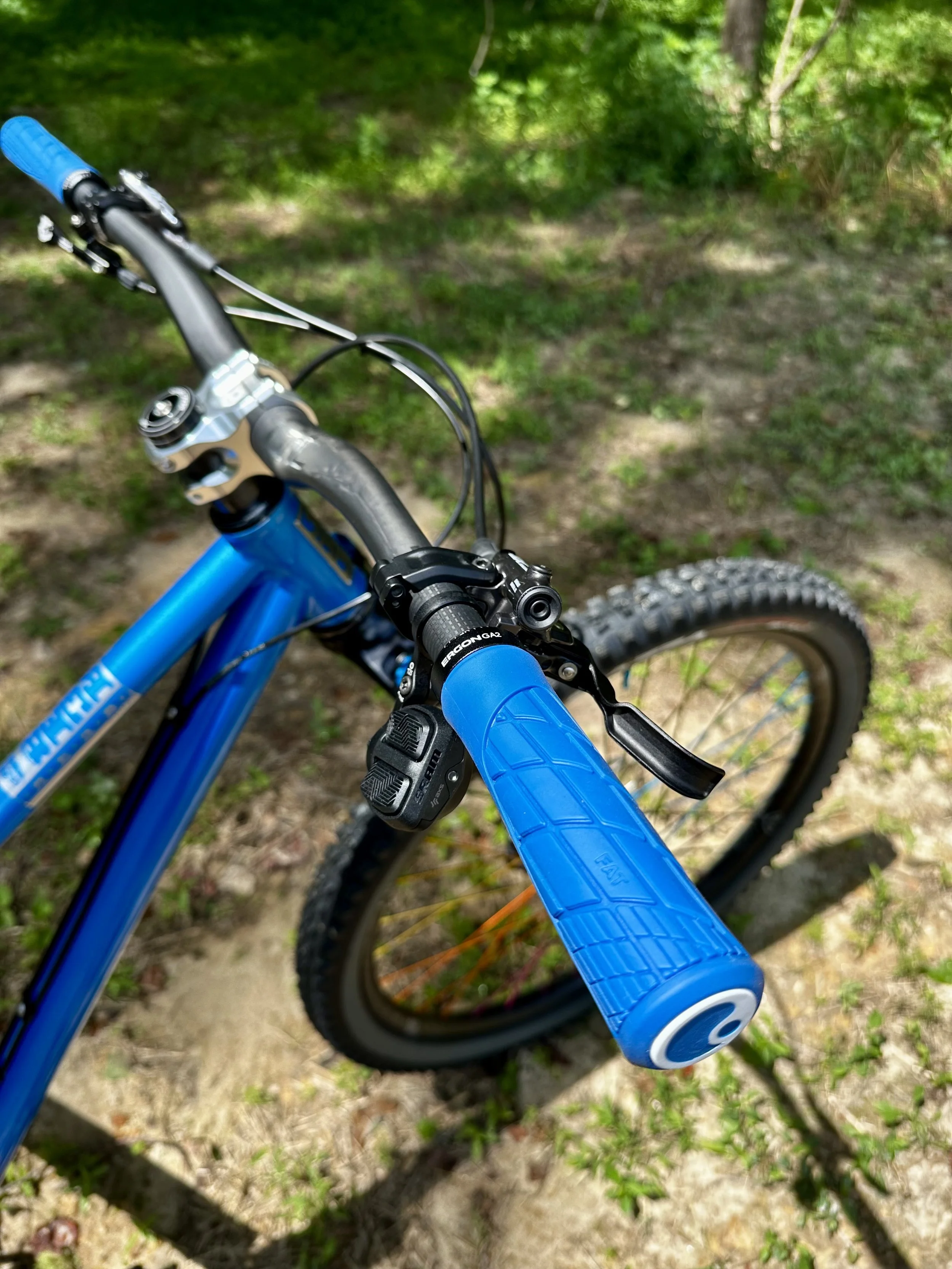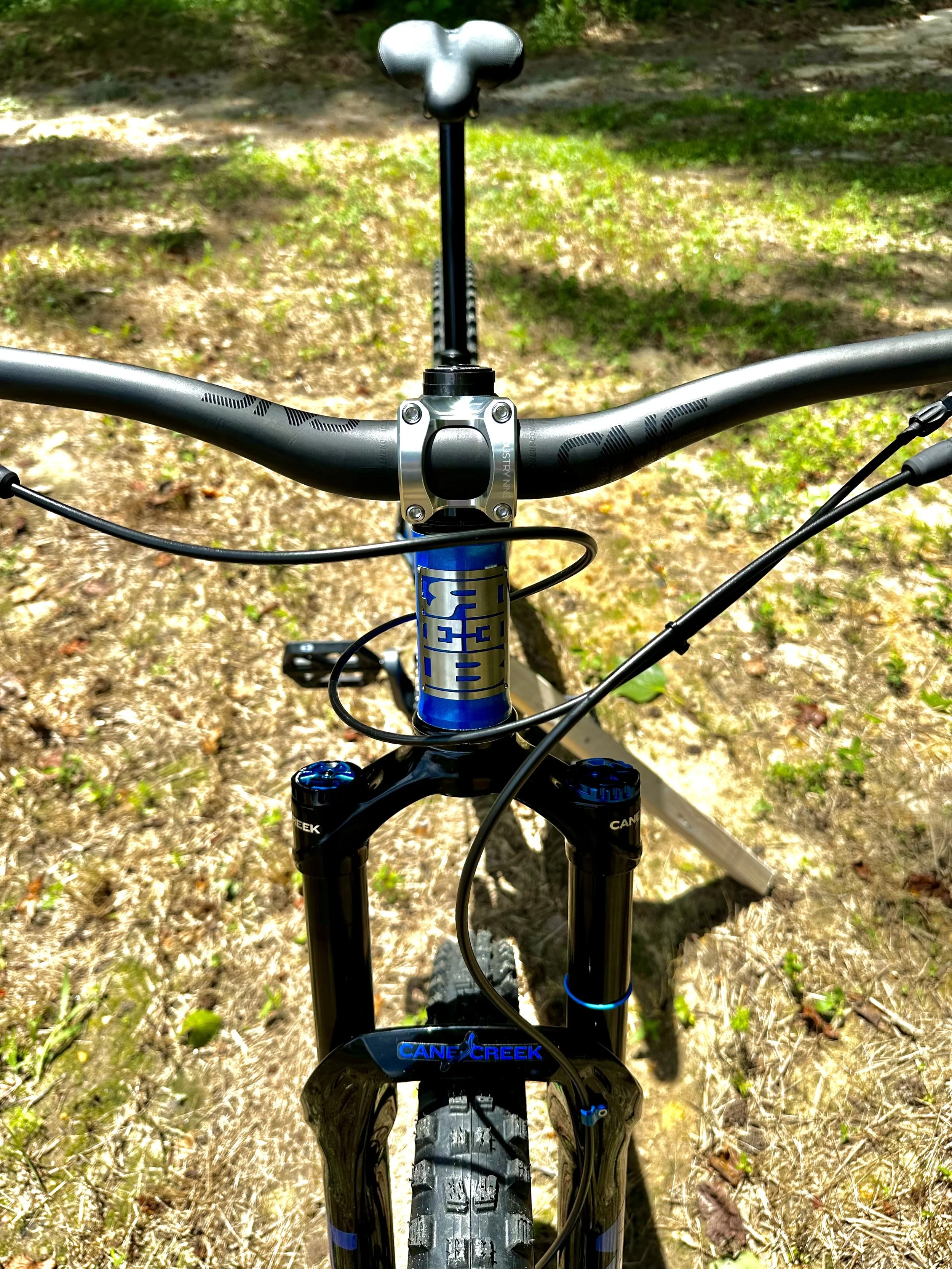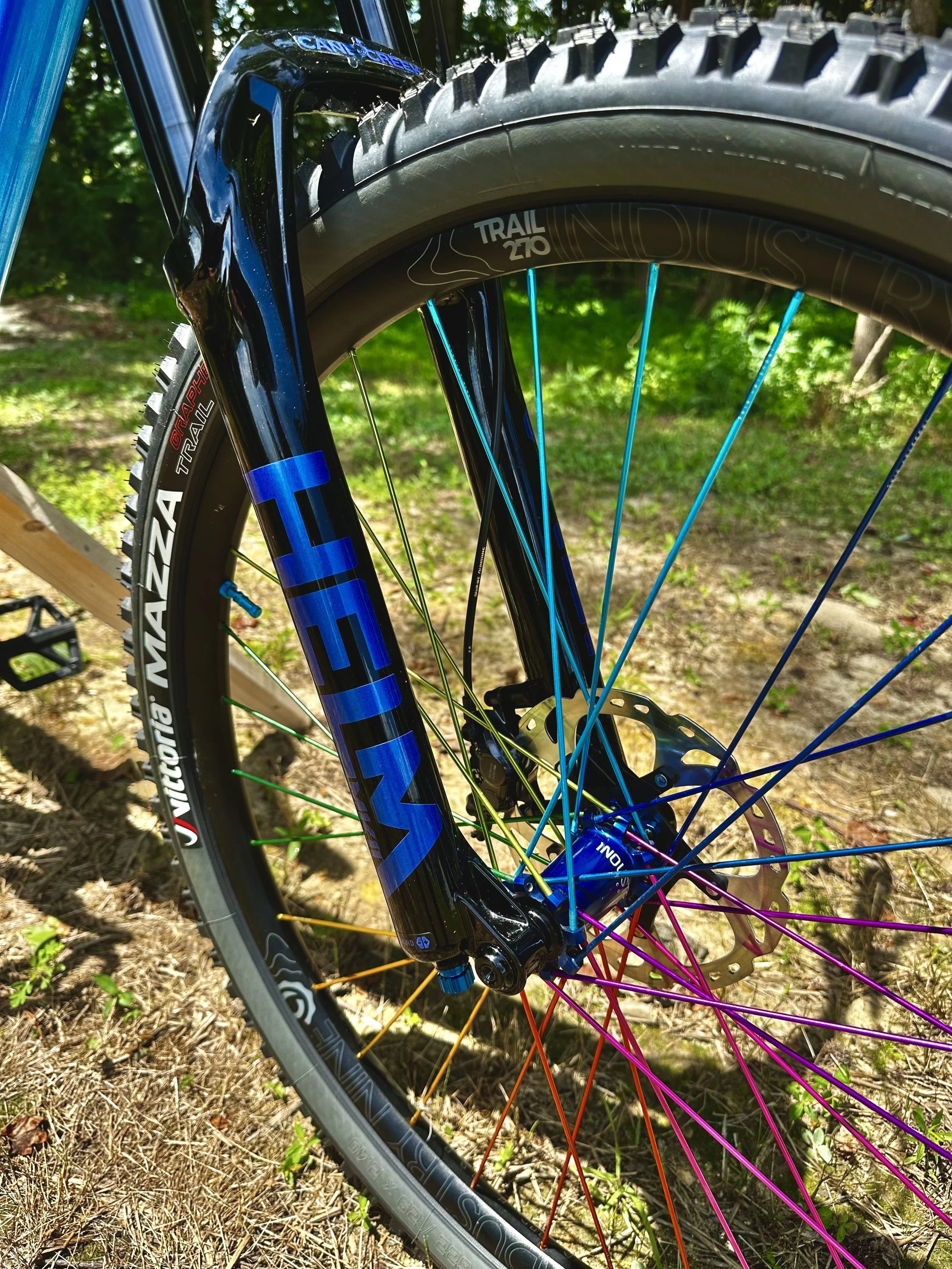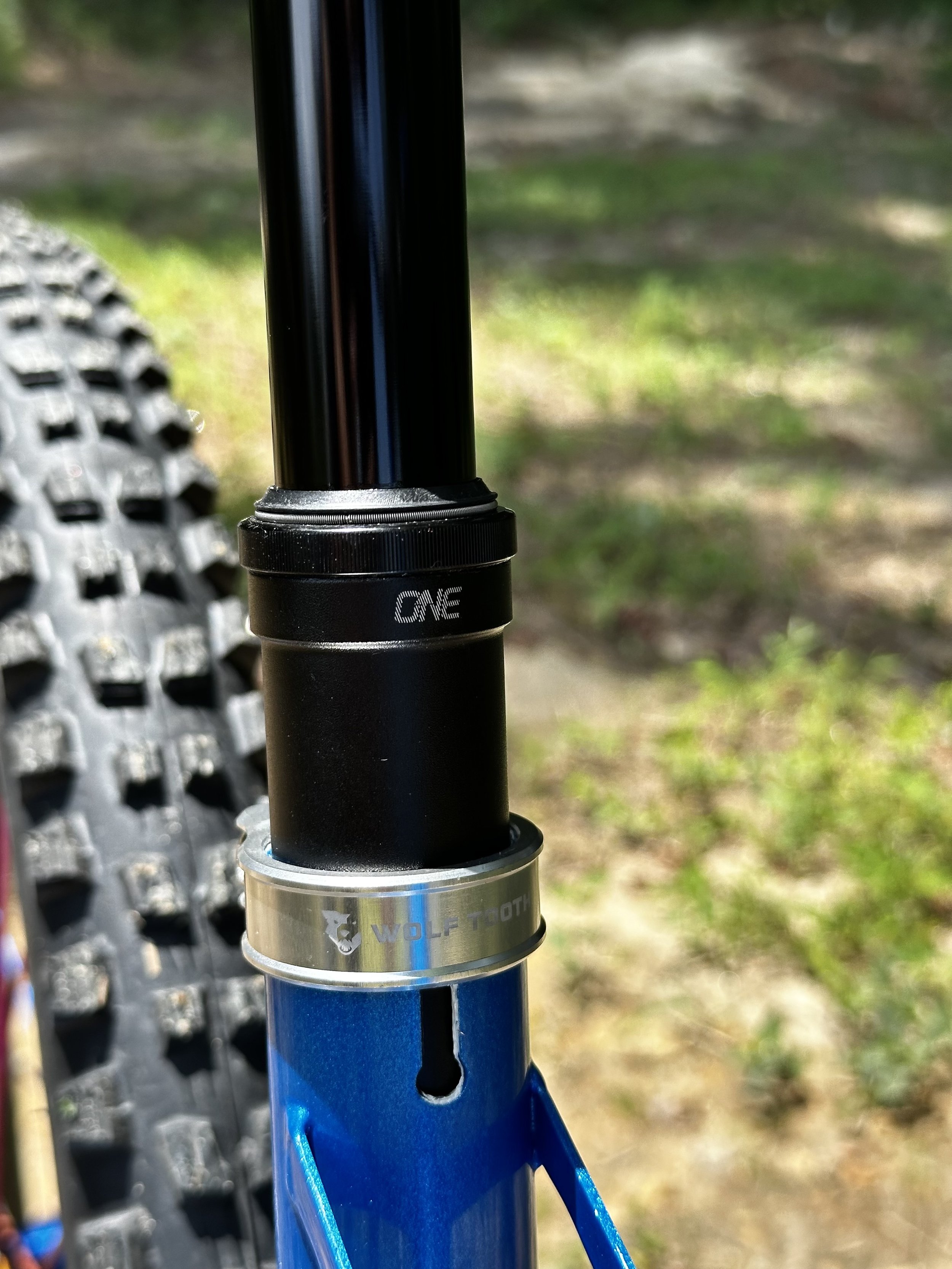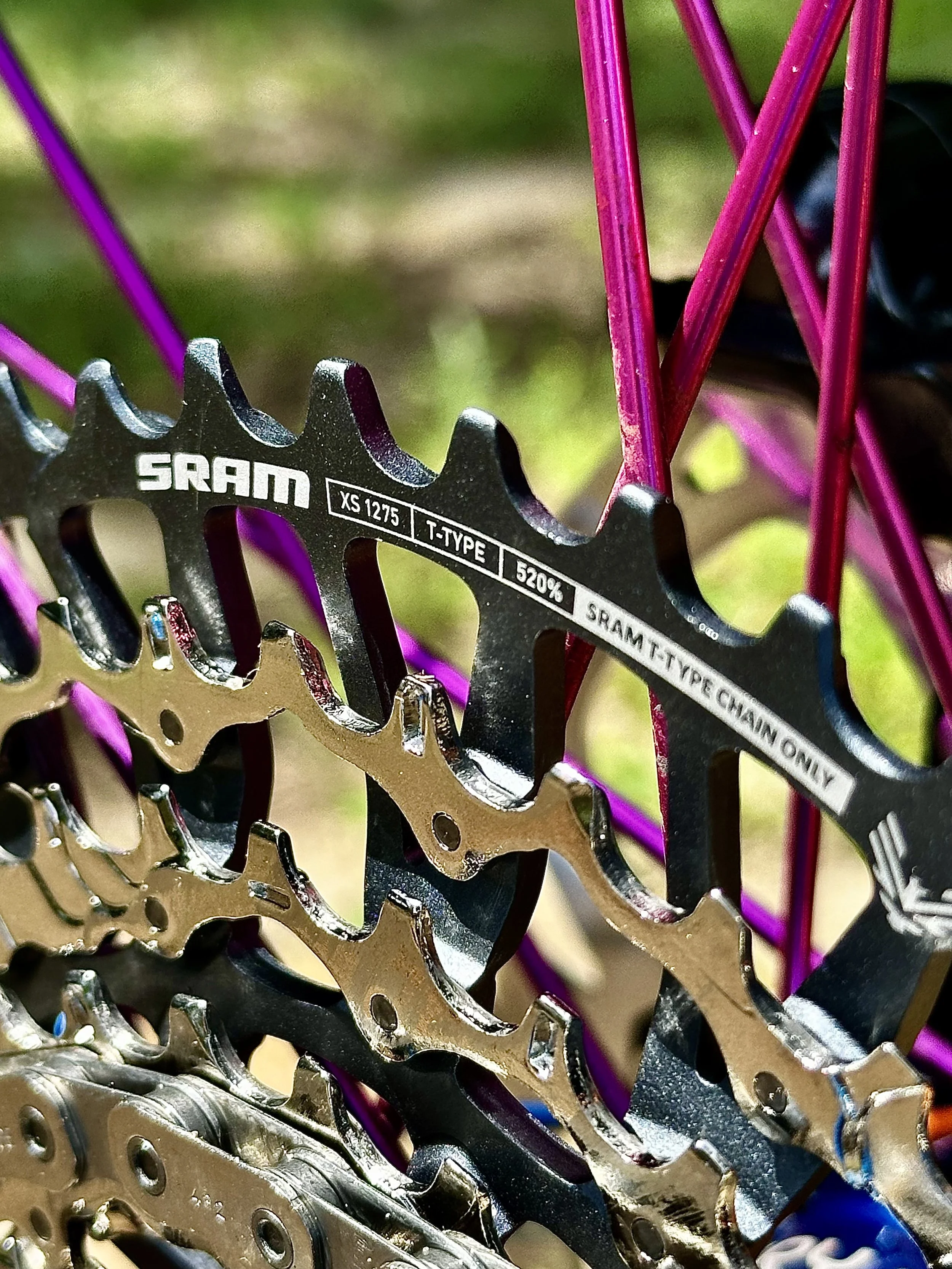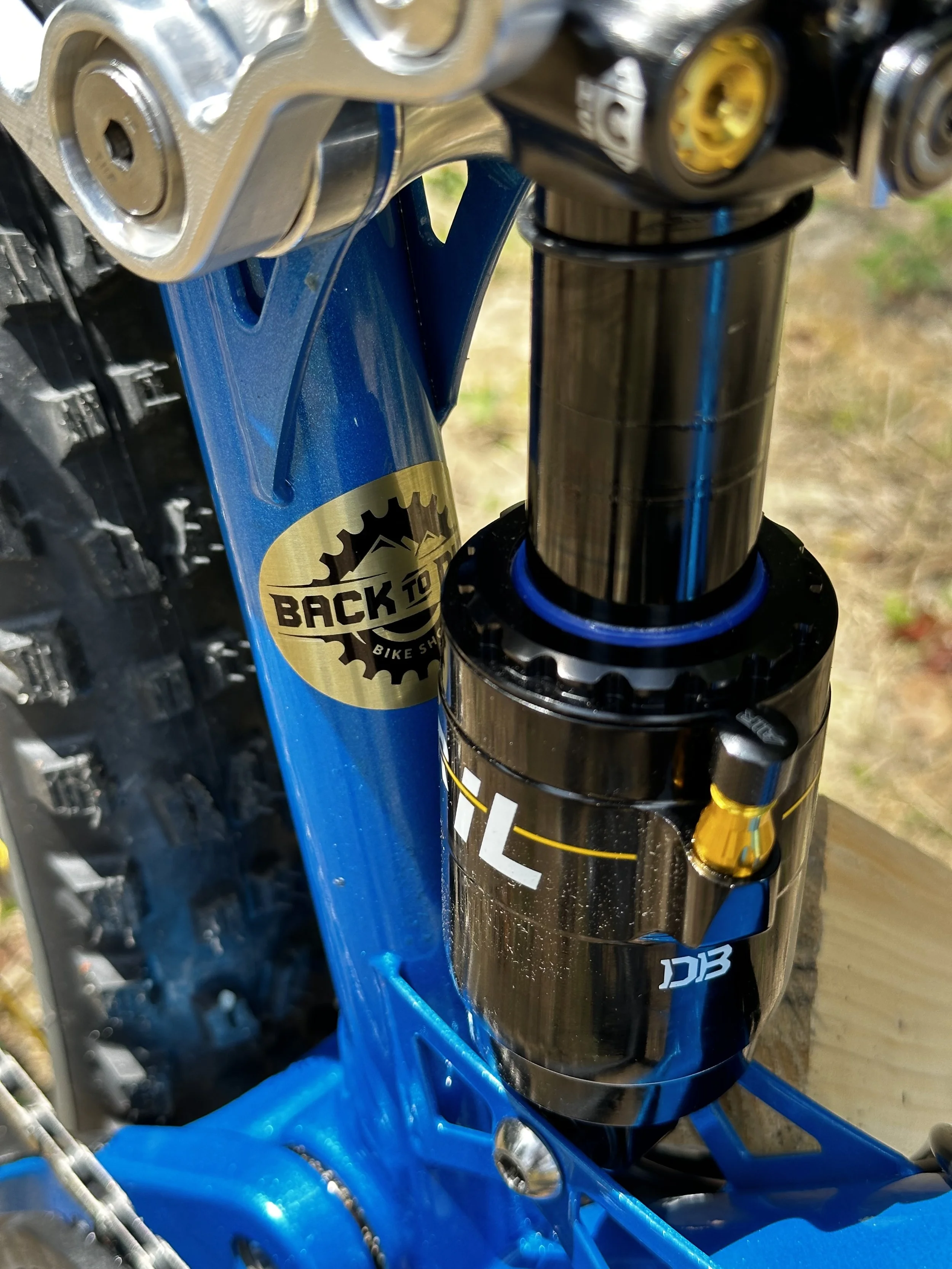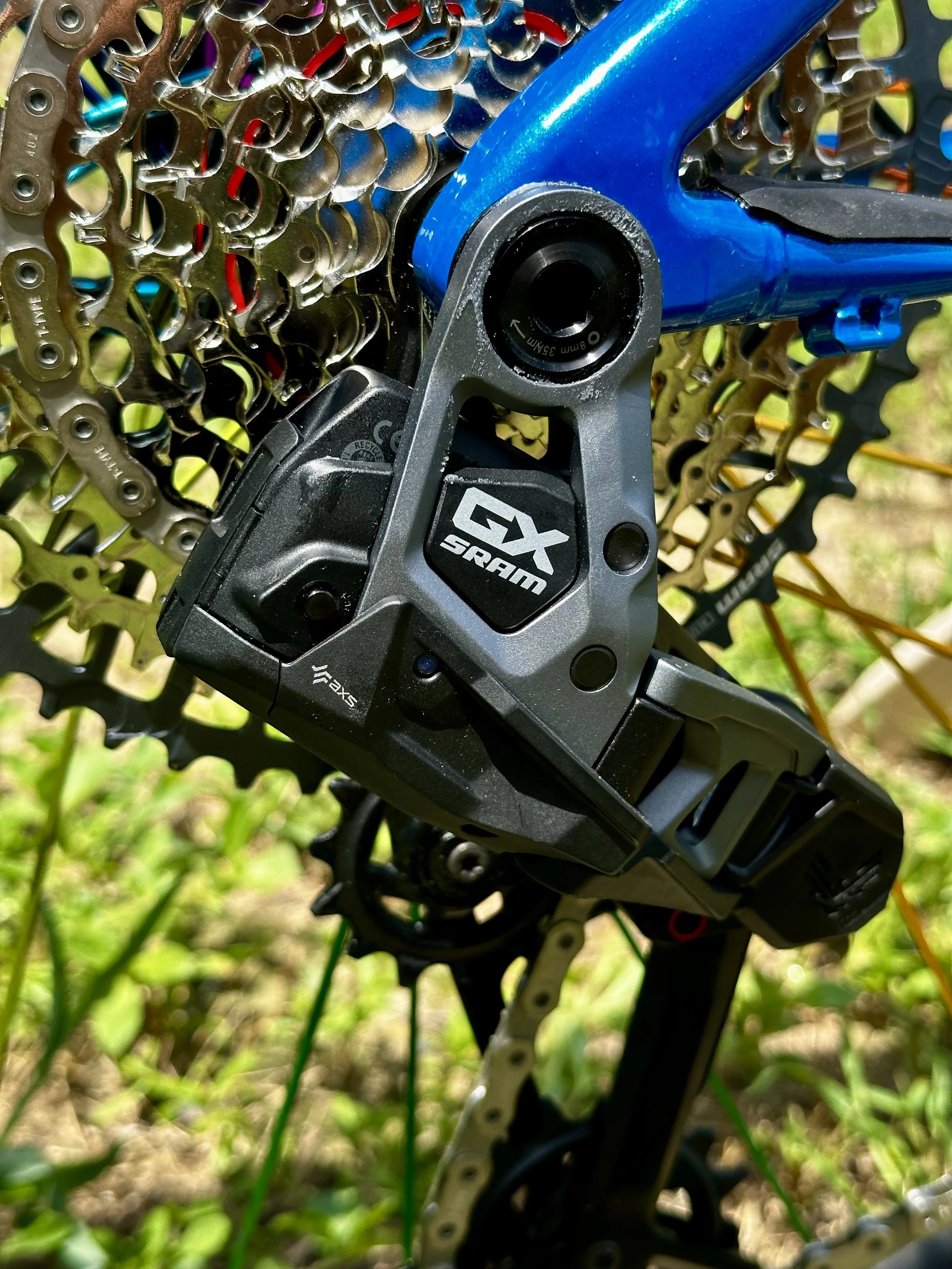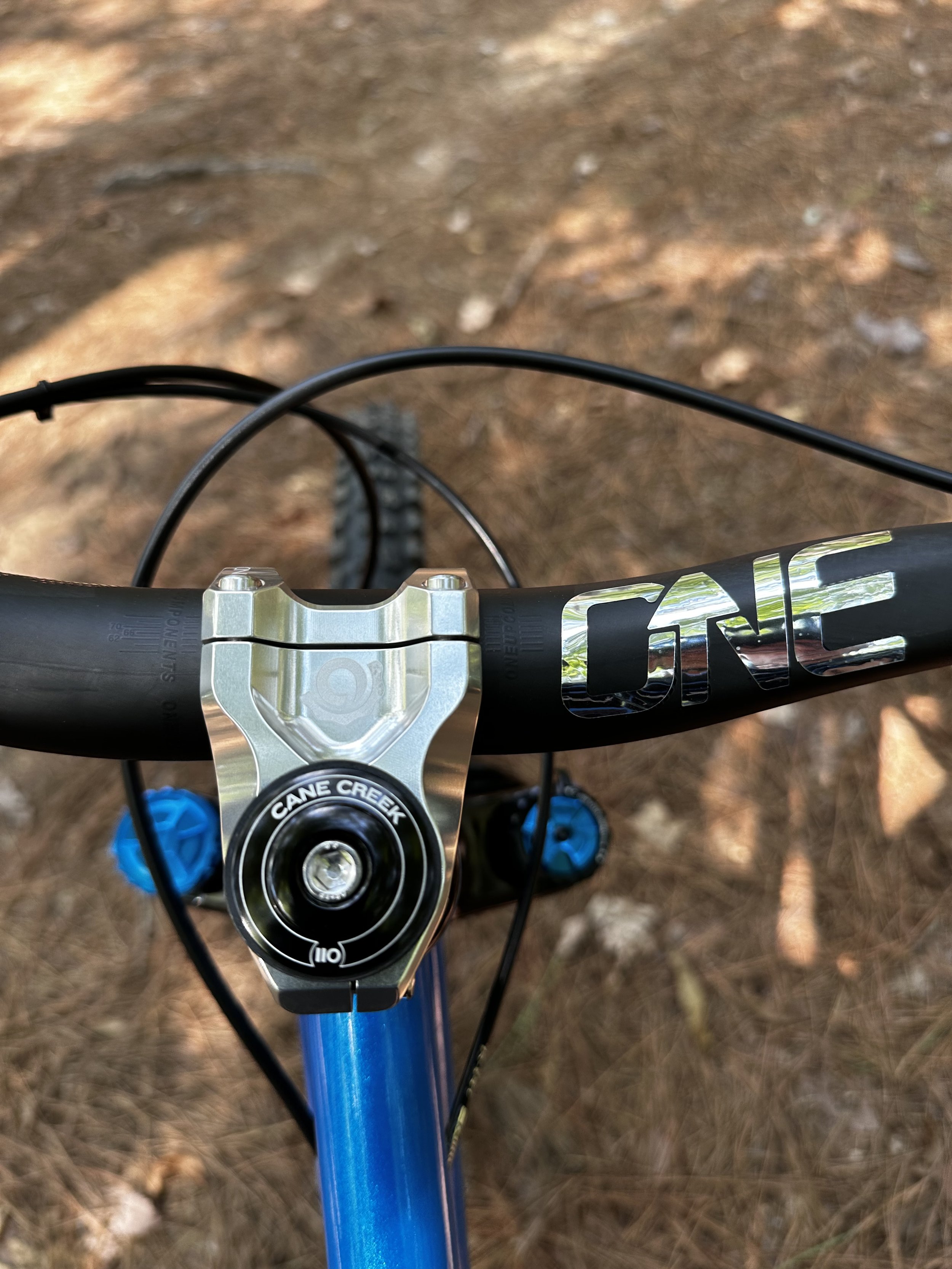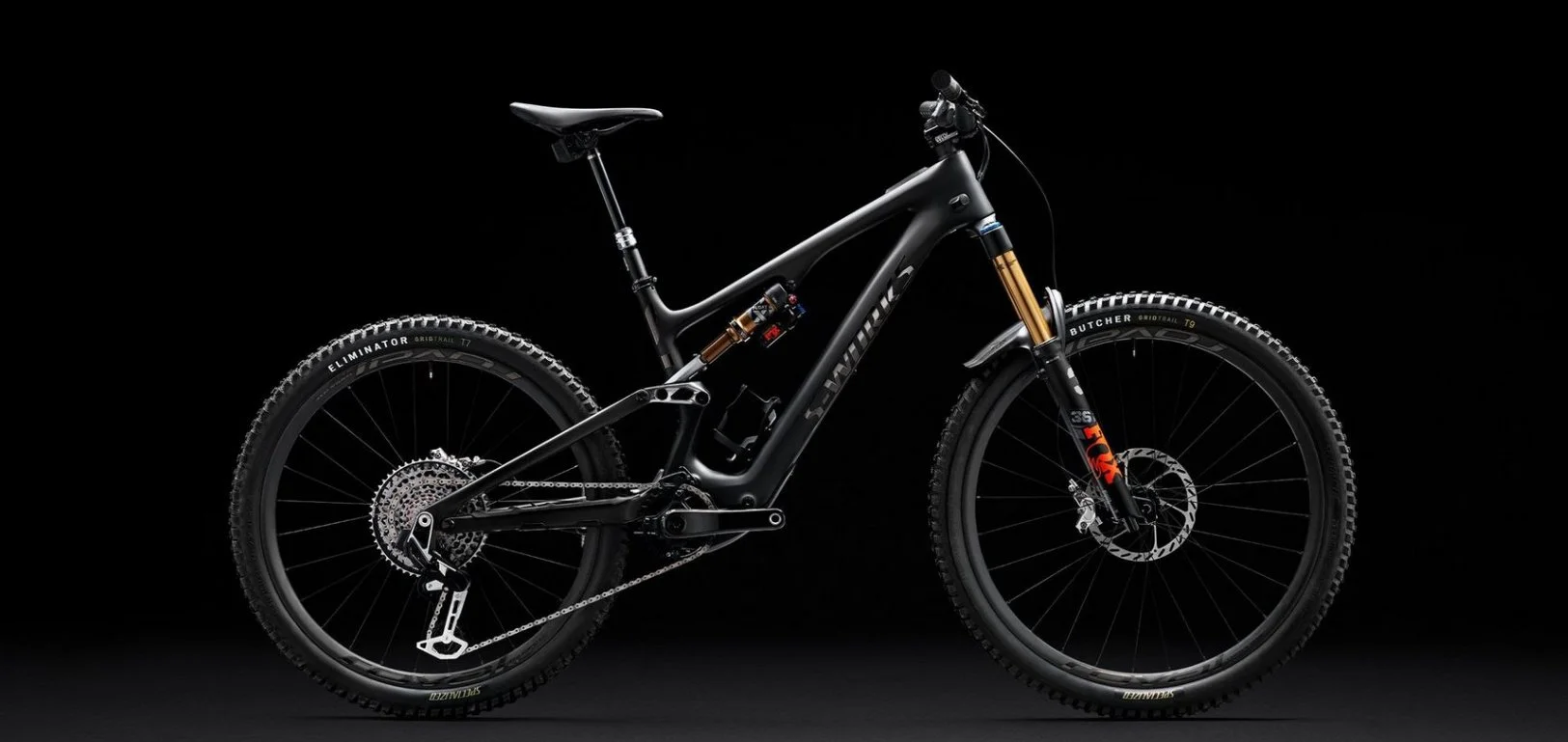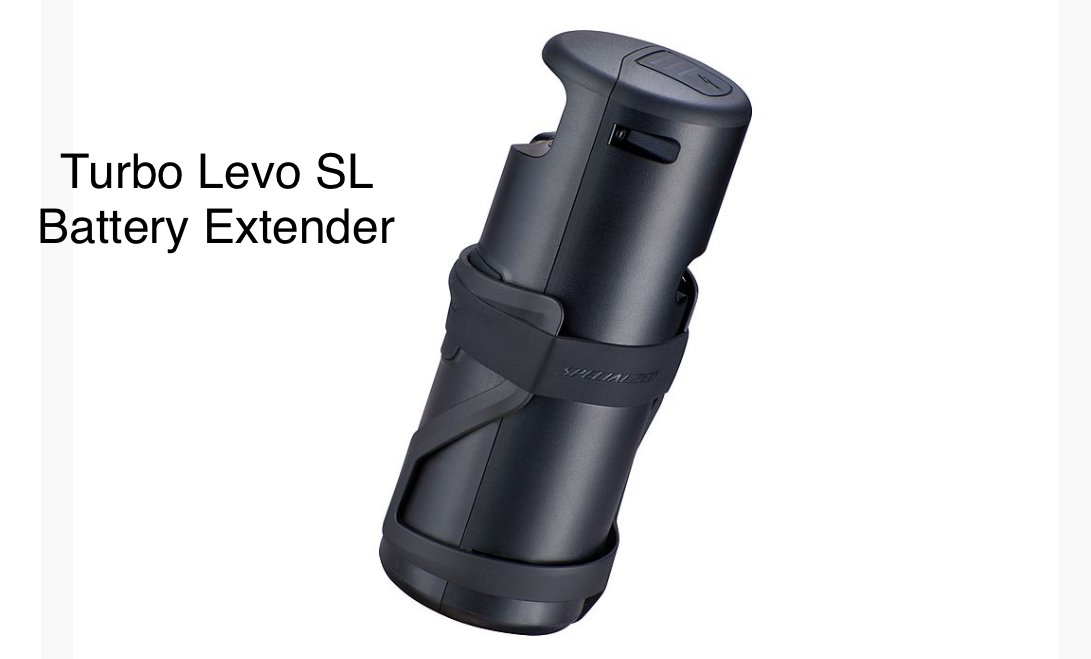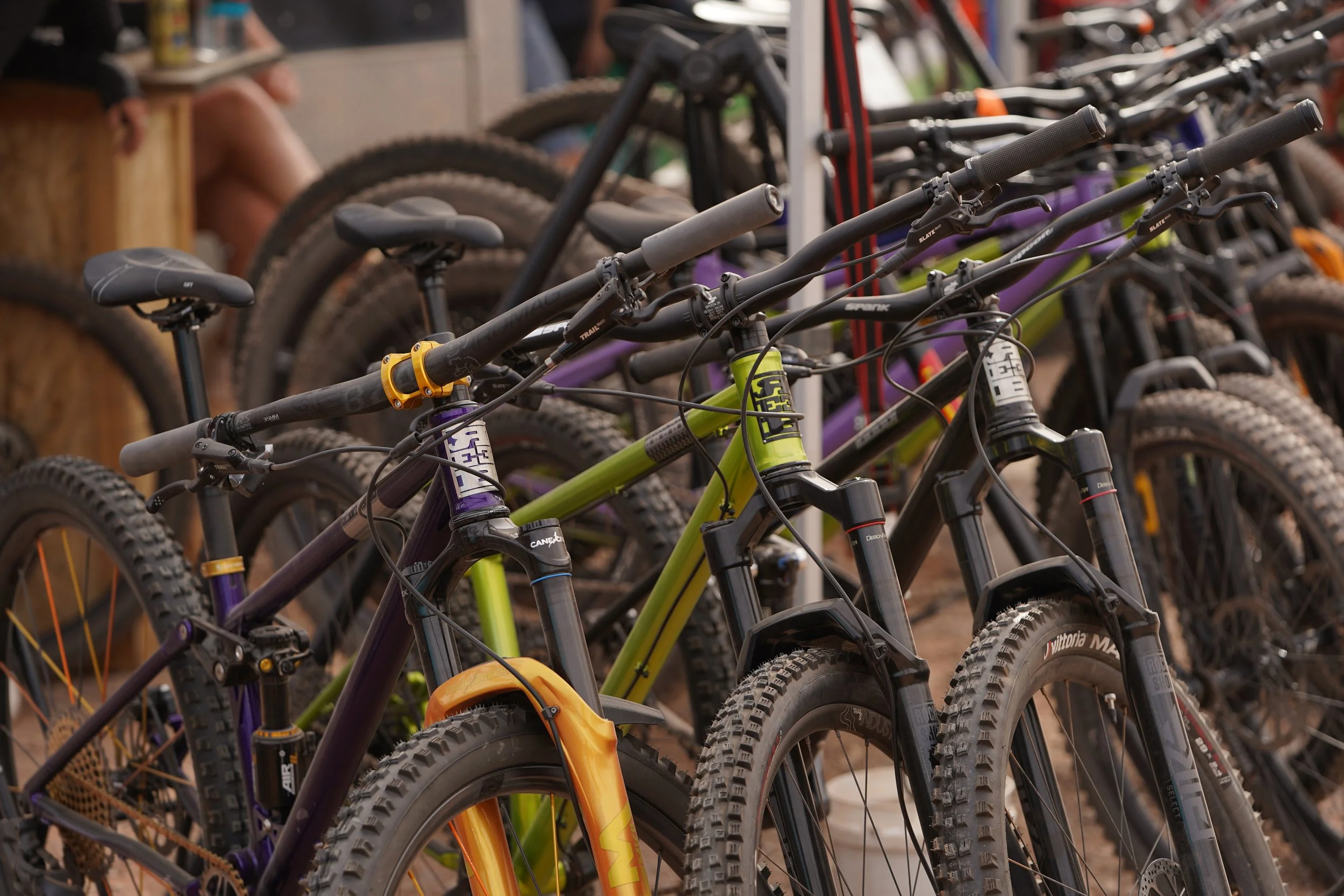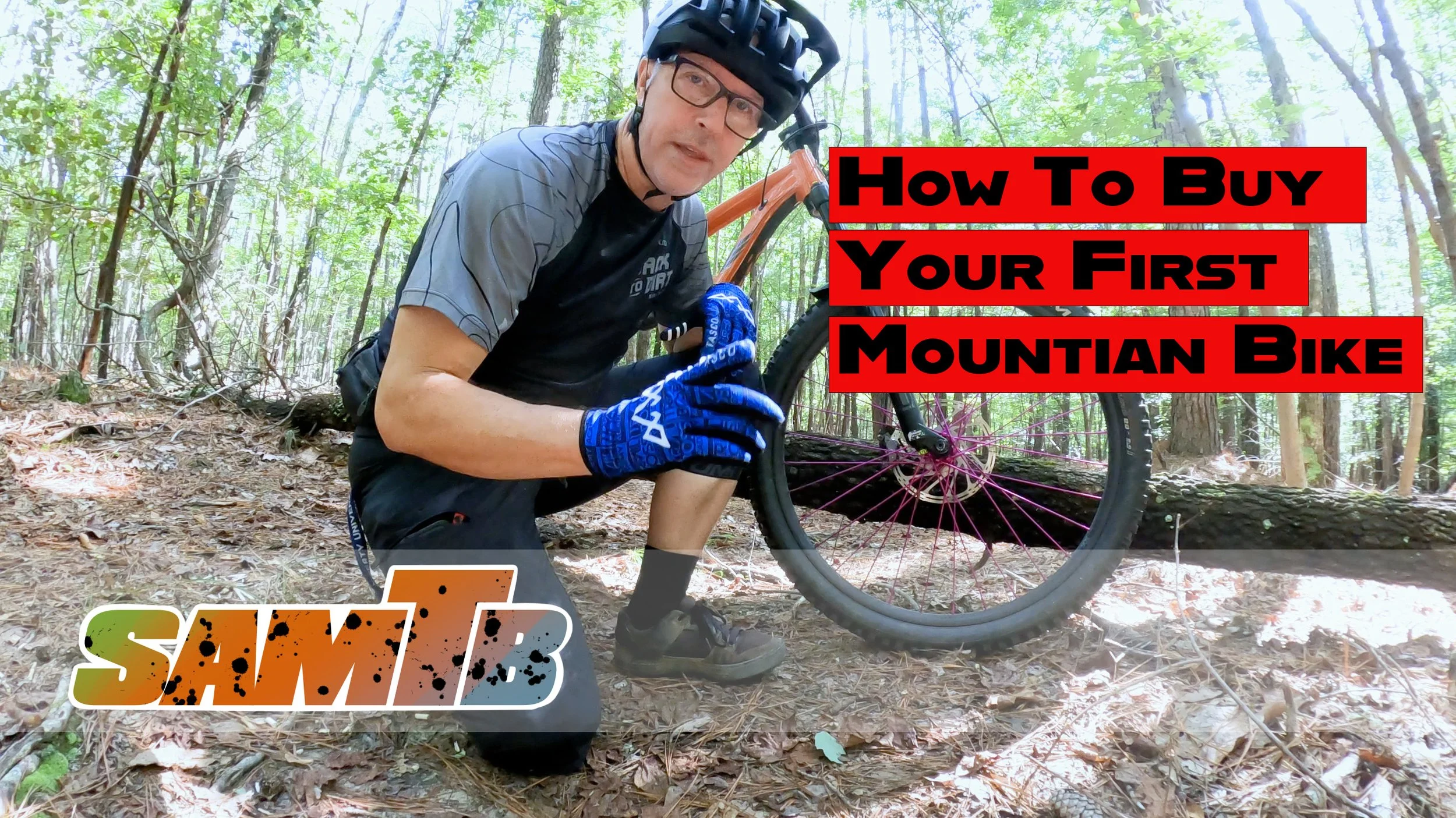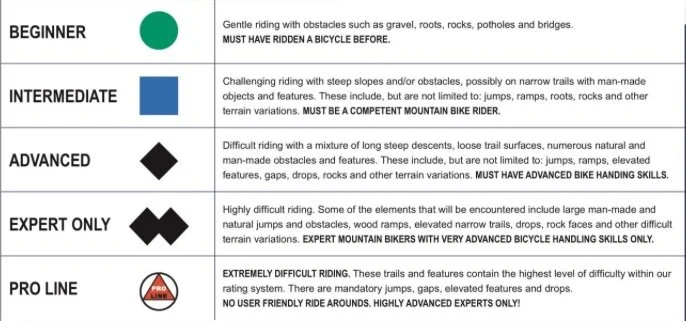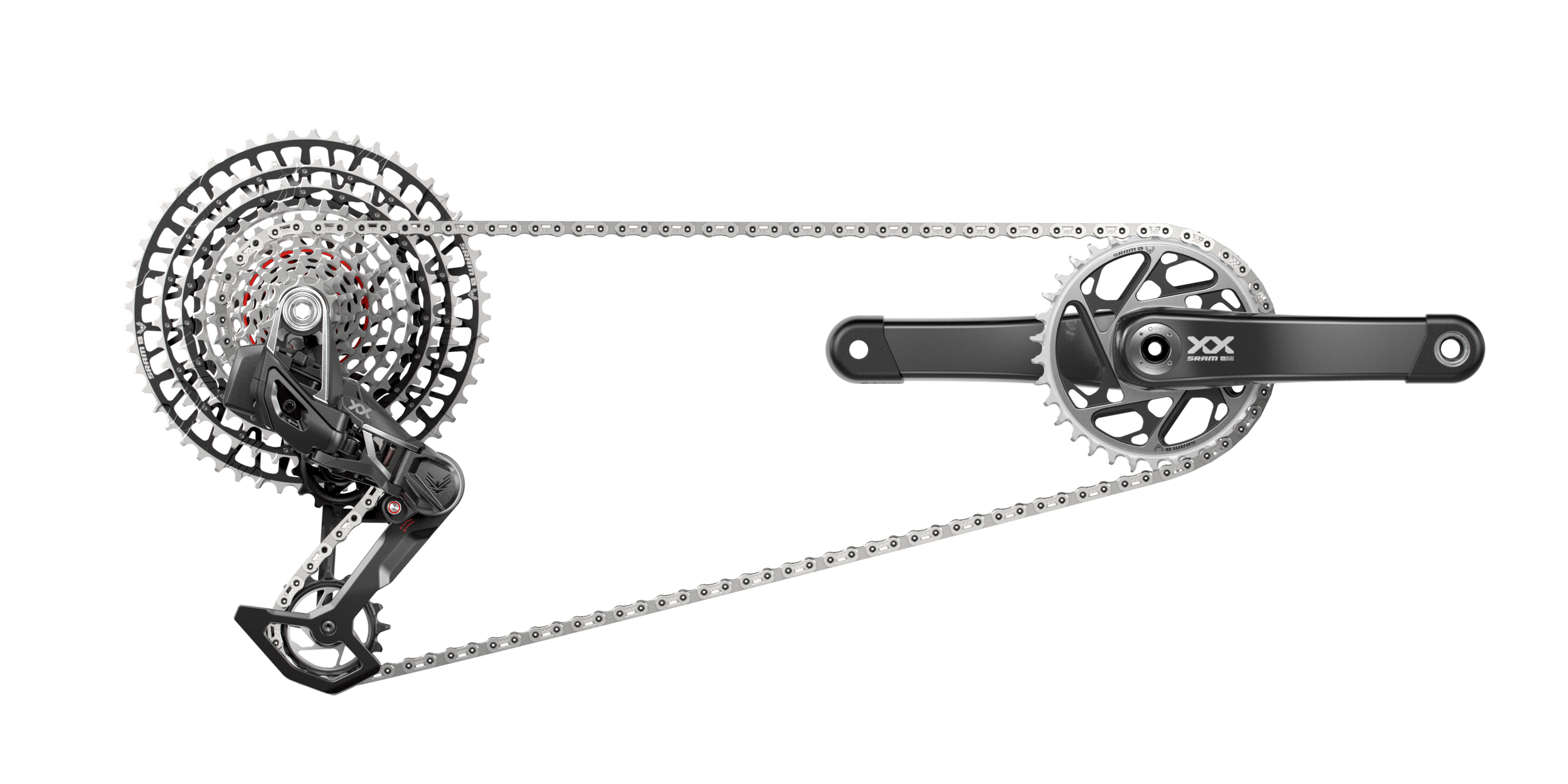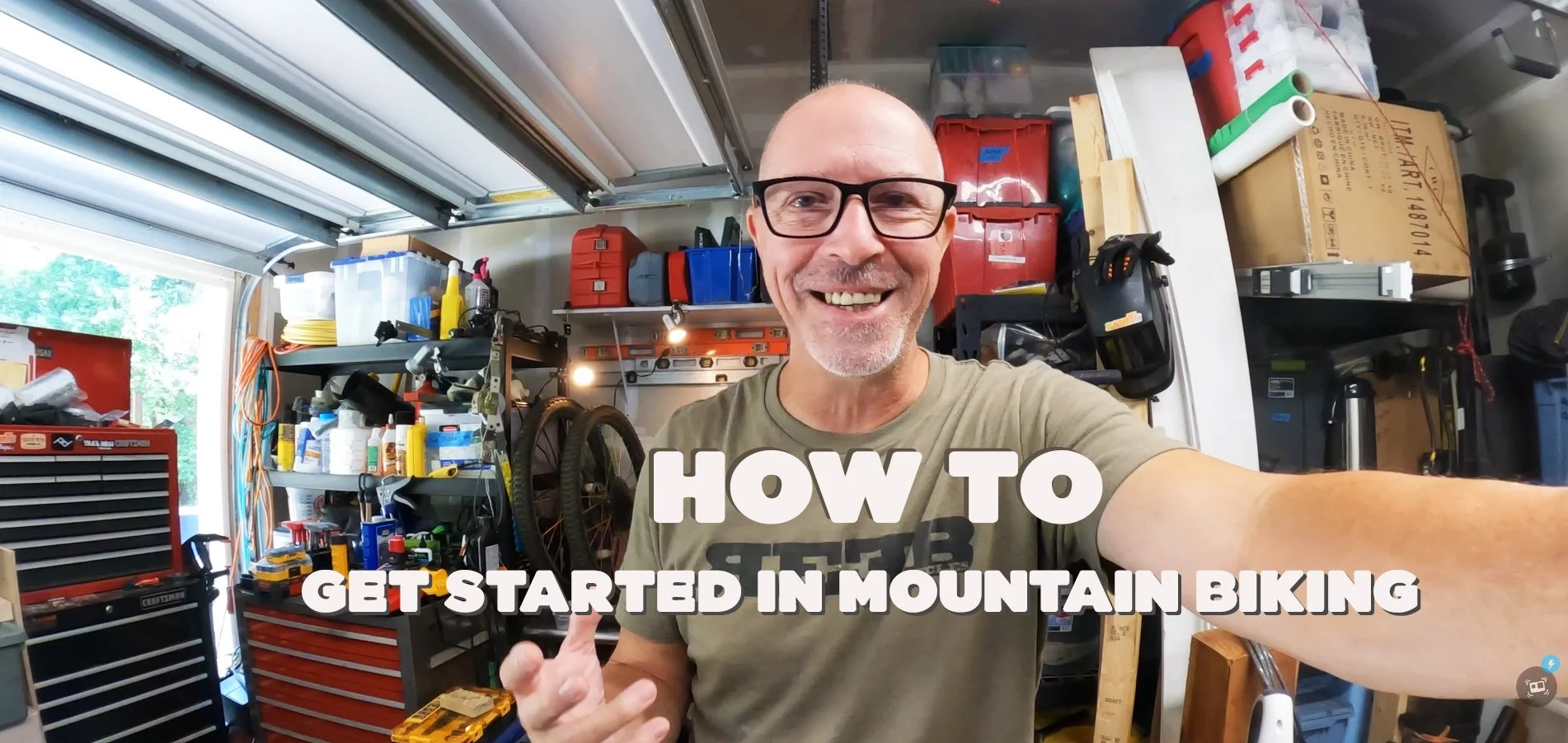REEB SST Review
Looking at the quality and finish of the REEB Brand, it’s hard to believe that these guys were working out of a barn until a month ago. REEB has upped the ante on what a mountain bike is, what it can be made out of and how far can you push the engineering.
I’ve done my best to give you a peak inside the company and the people that make this place run.
I am very excited to see where this company goes and what their next bike looks like. Whatever it is, it’s going to be epic.
Radically Engineered Exceptional Bikes. Also REEB is BEER spelled backwards!
If you’re looking for a new bike right now, you’re in a good place. You can definitely find some great deals if you are willing to shop around. What is harder to find is an exceptional bike that does not look exactly like every other bike on the trail. Case and Point, Ibis just released their newest iteration of the Ripmo and when the ads first started rolling out, I thought I was looking at an ad for the New Yeti. This is not a swipe at Ibis, it is just an example of the trend within the mainstream MTB industry. Most of the top brands are looking remarkably similar nowadays.
REEB is a refreshing departure from the rest of the pack. In terms of looks, materials, build process and philosophy the divide grows even wider. Every Bike from REEB is designed, built and assembled right here in Colorado, USA. Another unique aspect of the REEB brand is their indestructible nature. Unlike most bike manufacturers today, REEB has chosen to use a proprietary Chromoly Steel tubing and 3D printed 316L stainless Steel for their materials of choice. Throw in some truly ingenious engineering VooDoo and they have managed to build a bike that is both strong and lightweight.
REEB was founded by Dale Katechis, the world famous brewmaster and founder of Oscar Blues Brewing Company. The story goes something like this. Around 10 years ago Dale had his bike stollen and rather than buying a new bike he decided to build his own bike. Out of this effort, REEB was born
The guys at REEB are daring to build something different and that becomes even more apparent when you walk through the door of their shop. But first let me back up a little and explain where all of my interest and obsession with the REEB brand started.
My first introduction to REEB was several years ago, through Professional Mountain Bike Rider and REEB Ambassador, Jeff Lenosky. I stumbled across his YouTube channel, in search of technical riding videos and I was hooked. I was eager to learn as much as I could about the sport but more importantly to become a better rider. Jeff’s instructional content was just what I was looking for. Initially I didn’t even notice what bike Jeff was riding. It wasn’t until he introduced his new bike, the Sqweeb that I became interested in learning more about REEB Cycles.
Fast forward to OuterBike MOAB this past September (2023) and I finally got on a REEB STEEZL for one of the most amazing rides of my life. Over the three days at OuterBike we rode some of the most iconic trails Moab has to offer. Captain AHAB (lower), HyMasa and Cliff Hanger just to name a few. It was also one of the toughest rides I have even been on, it left me with a strange feeling that was both exhilarating and exhausting. One of the biggest Impressions I had on this bike was how agile and balanced it felt.
For weeks after my adventure in Moab, I kept thinking about how well the STEEZL rode in such challenging conditions and how, contrary to the fact the bike is made of steel, it felt light and agile. The STEEZL has a front Triangle made of Steel and a rear Triangle made of Aluminium. Despite being made of steel, it was still lighter than my Ibis Ripmo AF.
Fast forward once again to this past April (2024), I decided I needed to get back out on a REEB STEEZL and SST. I hopped on a plane and flew out to Lyons Colorado to visit REEB’s Headquarters to tour the barn and to Ride the SST and Steezl again.
It was this visit that really helped everything come into focus about REEB, the Company, the people behind the brand and the contagious passion among everyone who rides a REEB.
The build process for these bikes is different from any of the big bike manufacturing company.
To begin, the uncomplicated look of the bike design is a very clever deception, despite the simple look of this bike, it is actually a complex design that incorporates a great deal of engineering. This includes the use of proprietary Chromoly Steel and 3D printed Stainless Steel. These pieces are manually TIG welded together to create what looks like a single seamless tube. Those pieces are then welded together to create a complete bike. The build process of these bikes is labor intense, this not a high-volume production of thousands of bikes per month. Instead, the focus here is on quality and customization for their customers.
Observing REEB’s bike building process is impressive. Aside from the 3D printed components, each bike is hand-built and assembled with detailed attention to each weld and the custom preferences for the customer.
JUST SOMETHING TO THINK ABOUT
As I admired the efficiency of the REEB shop and the tremendous efforts that goes into building these amazing steel bikes, some thought-provoking questions popped into my head. When comparing the amount of effort, attention and energy a bike company puts into building and creating bikes, how do enormous companies like GIANT, TREK and SPECIALIZED measure up to a smaller company like REEB? Can they even come close to the individualized custom detail and preferences for your personal bike? How much of their company resources are focused on Mountain biking? Last year GIANT Bike, which is a part of GIANT Group, claims in their 2023 financial report to have assets totaling in excess of 65 million dollars. A small percentage of this comes from mountain bike sales.
I don’t take any issue with a bike manufacturer diversifying their brand. I think, if done well, it can lead to better designs all around. I do wonder however, how committed that company is, to develop and build the best bike for ME or you, an avid mountain biker.
I can say with confidence that for REEB, the answer is 100% of their resources and development go into making the SST and STEEZL. I’ve also watched as REEB has continued to collaborate with partners like Cane Creek, TRP, Industry Nine, Vittoria Tires and One Up to give back to the community. In North Carolina alone, REEB has been a major supporter of the Pisgah SORBA and has helped to raise over $100,000 over the past few years.
I’m sure that REEB will continue to grow and over time a broader offering will come out of their innovative efforts. Exactly what their next bike will look like is anyone’s guess but I’m certain it will be true to REEB’s vision to build the best bikes possible.
Currently REEB produces 2 World Class Mountain Bike models. The SST and the STEEZL.
The SST is a short travel All Steel Bike. It comes with a 185x50mm Trunnion, 120 Cane Creek shock, with the option to get the AIR IL or Coil IL Shock on the rear and the Cane Creek Helm MKII, 130-150mm Fork options.
The STEEZL is a Mid/Long Travel smasher. It comes with a Steel Front Triangle and an Aluminium Rear Triangle, Fork Options range from 160mm-170mm on the front and you have 2 options for your rear end travel, thanks to an ingenious adapter you can choose either 140mm or 155mm to dial in the ride you want. Thanks to a flip chip you can ride 29/29 or 29/27.5. Who doesn’t love options?
Both the SST and Steezl come with an impressive component lineup. From Industry Nine 1/1 Wheels, Vittoria Tires, Ergon Grips, Both SRAM and Shimano Transmission options as well as TRP Brakes and OneUp Droppers. For your suspension choices Cane Creek is the king but if you're looking for a Fox or Rock Shock set up, the guys at REEB can hook you up.
And the list goes on.
I chose to do a completely custom build on my SST. A list of all the components I chose are listed below.
SST Frame –Medium - Custom Color, Lite Illusion Blue
Cane Creek AIR IL Shock
Cane Creek HELM MKII – AIR 29-150mm
OneUp Carbon Handle Bars
ERGON EG2 Fat Grips
Industry Nine Stem
Cane Creek 110 Hellbender Head tube
Shimano XT 4 Piston Brakes
Shimano 180-200mm Routers
SRAM AXS “T” Type Transmission system
OneUP 210mm dropper
WTB VOLT Saddle
Industry Nine TR270 Wheels
Vittoria Mazza Tires
Crank works Flat Peddles
The Wrap Up
Usually at this point, an article will have a list of pros and cons at the bottom that spells out the good the bad and the ugly. I’ll spare you the boring pointless list. Instead I’ll leave you with these final thoughts.
I believe that companies like REEB are the Trail Blazers to our sports future. There is a saying “Necessity is the mother of invention” and in the sport of mountain biking this is true! This idea has been at the heart of the sport from the beginning and for this sport to continue to evolve and grow, we need to keep our eyes open for innovative start ups like REEB.
It is rare that a company ignores the hot shiny new thing, such as E-Bikes and Carbon Frames and sticks to what they know they do best. This focus allows a company to hone their product to perfection. I’m sure there must be some temptation to ship their designs to Korea, Mexico or China and let so nameless company produce higher volumes of bikes for them, like so many of the big bike brands do .
This mindset seems so far removed from the principles and values that make REEB special. While I hope to see REEB grow and become a bigger more successful company, Simultaneously I hope that REEB never loses that small company feel, it has served them well to this point.
SO here it is, you have reached the end of this article, now go get your butt in the seat of a SST or STEEZL! Find out for yourself if these bikes are as good as I say. It’s not just me either, PINK BIKE, VitalMTB, Single Track Mountain Bike News, Mountain Bike Review, Bikepaking & Bikemag, all give these bikes a big thumbs up.
You can demo a REEB at any of the OuterBike events through the USA. Visit REEB in Longmont Colorado or check out the REEB website for where else you can ride a REEB.
Visit www.reebcycles.com and check them out today!
Special thanks for Jeff Lenosky for helping bring this article to publication
Thanks to Charley Storm at Back to Dirt Bikes, Bike Shop in Sanford NC for helping put this dream bike together.
Check out www.backtodirtbikes.com
Specialized Turbo Levo SL
The Specialized Turbo Levo SL is a cutting-edge mountain bike designed for riders seeking a blend of high-performance and lightweight design. At the heart of this bike is its innovative SL 1.1 motor, which sets it apart in the e-MTB category. The motor is not only exceptionally quiet but also remarkably light, contributing to the overall agile and nimble feel of the bike. The Specialized 1.1 motor is powered by a sleek and integrated 320Wh battery, providing ample power for extended rides while maintaining an impressively low weight. On my test runs I was especially surprised by how quite the bike road, after just 30 minutes on the bike and you forget you’re riding an E-Bike and simply focus on the fun!
Specialized Turbo Levo SL
This Levo SL boasts an advanced frame constructed from Specialized's FACT 11m carbon fiber, ensuring durability without compromising on weight. The Turbo Levo SL features a 150mm front and rear suspension, courtesy of FOX 36 Factory, offering a smooth and controlled ride over varied terrains. Equipped with a SRAM Eagle 12-speed drivetrain, the Turbo Levo SL ensures precise and efficient gear changes, complementing the rider's experience on both ascents and descents. With 29-inch wheels and Specialized Butcher tires, this bike delivers excellent traction and stability, making it a reliable companion for challenging trails.
In terms of user interface, the Turbo Levo SL incorporates Specialized's MasterMind TCU (Turbo Connect Unit), providing riders with intuitive control over their electric assistance levels. This thoughtful integration allows cyclists to seamlessly adjust power settings while keeping their focus on the trail. Overall, the Specialized Turbo Levo SL stands out as a high-performing, lightweight e-MTB, pushing the boundaries of what riders can expect from an electric mountain bike.
The REEB STEEZL Review
REEB Steezl Bike Review from Moab, UT. Outerbike Moab 2023
I have a serious issue with this Bike, The REEB STEEZL is not what it appears to be, this bike is hiding things from you and I’m going to tell you all about what this means for you as a rider. Let’s start with the fact that this bike is made of Steel, hence the name. STEEZL, very clever name.
The modern Mountain bike is made from one of 3 materials ( in general ). The king of the dream bike material is Carbon, It’s strong and lightweight and it is expensive, a big factor in bike prices ballooning in the past decade. Next up is Aluminium, not quite as light as Carbon but less susceptible to failure due to blunt force impacts. Last but not least, we have Steel. Strong, Easy to work with and Heavier then Carbon and Aluminium?
This all seems pretty straight forward right? Wrong!!
REEB is not satisfied with making a good bike, they are always striving to build the best bike. Constant innovations and trials with different materials and designs bring out the best in their bike designs. I know that REEB is a bike builder to the outside world but my observations lead me to see this company as the true innovators and dreamers of what our sport will look like in the future.
The guys at REEB, it turns out, are Metalergical Magicians. They have found some secret, special magic trick that turns steel into a light, strong, innovative material. Part of the magic happens in the cutting edge world of 3D printing. REEB has blended cool design, 3D printing magic and Intuitive Geometry to create a true quiver killing bike. Their attention to the small details, and the craftsmanship have created bikes that have much higher tolerances to damage. That means you spend more time riding and less time fixing your bike. The Adaptive design applied means your bike will take the hits and keep on rocking up and down the trail.
You might expect a Steel mountain bike to be a bit rough and heavy. To the contrary, I found the STEEZL to be Simply Elegant in a very manly way and about a pound lighter than my Aluminium Mountain bike. When you ride the Steezl it is apparent that people that love to ride mountain bikes have built this bike. The greatest limitation on this bike was my riding ability. It was clear that as I rode through Moab on trails like AHAB and Alamasa, that I was the greatest limiting factor. This bike is ready and able to rock any trail you ride.
Steel is Light
Take a look at the accompanying video for more details. Here are the highlights.
The Steezl falls squarely into the Enduro category. It is a 29’er that you can run as a mullet with the flip of a chip. The Front triangle is made of a proprietary 4130 Chromoly tubing woven into the design are 3D printed parts made from 316L stainless steel and the rear triangle is made of Aluminium. It comes with a HELM 160mm or 170mm fork, Helm 155mm coil shock. You have the option of a Air HELM Shock as well. Shimano XT “transmission” and TRP Trail Brakes. The chain stay is size specific. The Steezl comes in 5 sizes, from S-XXL. Colors are plentiful and you have the option to have your very own unique color scheme as an option (for an additional cost).
The bottom line is, REEB has designed and built a dream bike that can slay any mountain you throw at it and its still a playful, fun bike that provides great trail feedback while remaining rock solid on eye tearing descents. To appreciate this bike you need to ride it! I highly recommend it!
Here are some details on the bike frame, for more details visit REEB’s website here!—> REEB
FRAME HIGHLIGHTS
REEB proprietary 4130 Chromoly tubing/3D printed 316L stainless steel/7005 Aluminum, Handmade in Colorado
155mm rear travel, 205x62.5mm Trunnion, Coil or Air
Designed for 160-170mm forks
29/29 or 29/27.5 via flip chip
Size specific chainstays (434mm S,M,L - 444mm XL,XXL)
Integrated ISCG tabs
Clearance for up to 29″ x 2.6″ tire
148x12mm rear spacing (SRAM UDH)
44mm headtube - ZS44 Top/EC44 Bottom headset
73mm threaded BB shell
31.6mm ø seat post, internal dropper post routing
Max dropper length: S-180mm / M-210mm / L thru XXL-240mm
Bike Reviews Are Coming!!
I just returned From Moab, UT were I attended OuterBike for the first time. This is an amazing event and the perfect event for anyone looking for a new bike especially if it’s your first bike.
OuterBike is a three day event, centered around Demoing bikes before you buy. The event takes place at some of the most epic mountain biking locations through out the USA. For three entire days you get to try as many bikes as you like, not to mention ride on some of the best trails the country has to offer.
REEB STEEZL and SST’s
The quality and variety of bikes you can access at OuterBike is incredible. One example here is REEB, Niche Bike builders based in Lyon’s Colorado. They build Steel triangle bikes that are as light or lighter then their competitors at competitive prices.
I had a chance to ride 5 Amazing bikes over the three days and I recorded reviews of each of these bikes. I’ll give you a look at each bike close up as well as footage of them on the trail and my first impression of how they ride and an honest opinion of what I feel are the bikes strengths and weaknesses, if any.
Outerbike allows you to get on the bikes that you think would be a great fit for you and your local trails. You can talk with the pros about bike setups, geometry, sag, sizing, flip chips and anything else you’d like. Spending a full day off two on a bike and comparing it back to back with other bikes is a great way to zoom in on the bike that is best for you.
The lucky five are………drum roll please!!!
REEB STEEZL
IBIS Ripmo
Specialized Levo SL
IBIS Ripley
Nukeproof Reactor
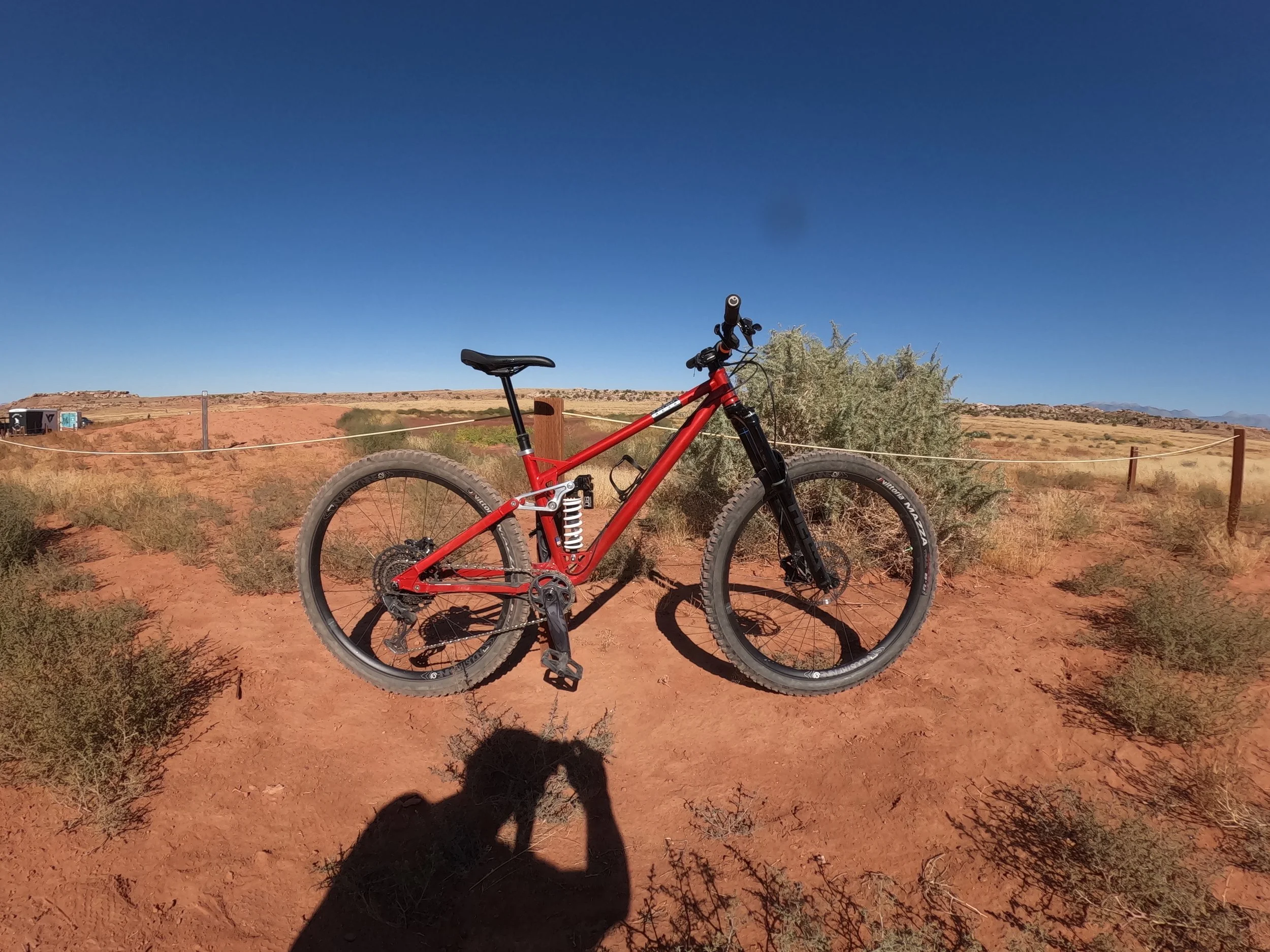
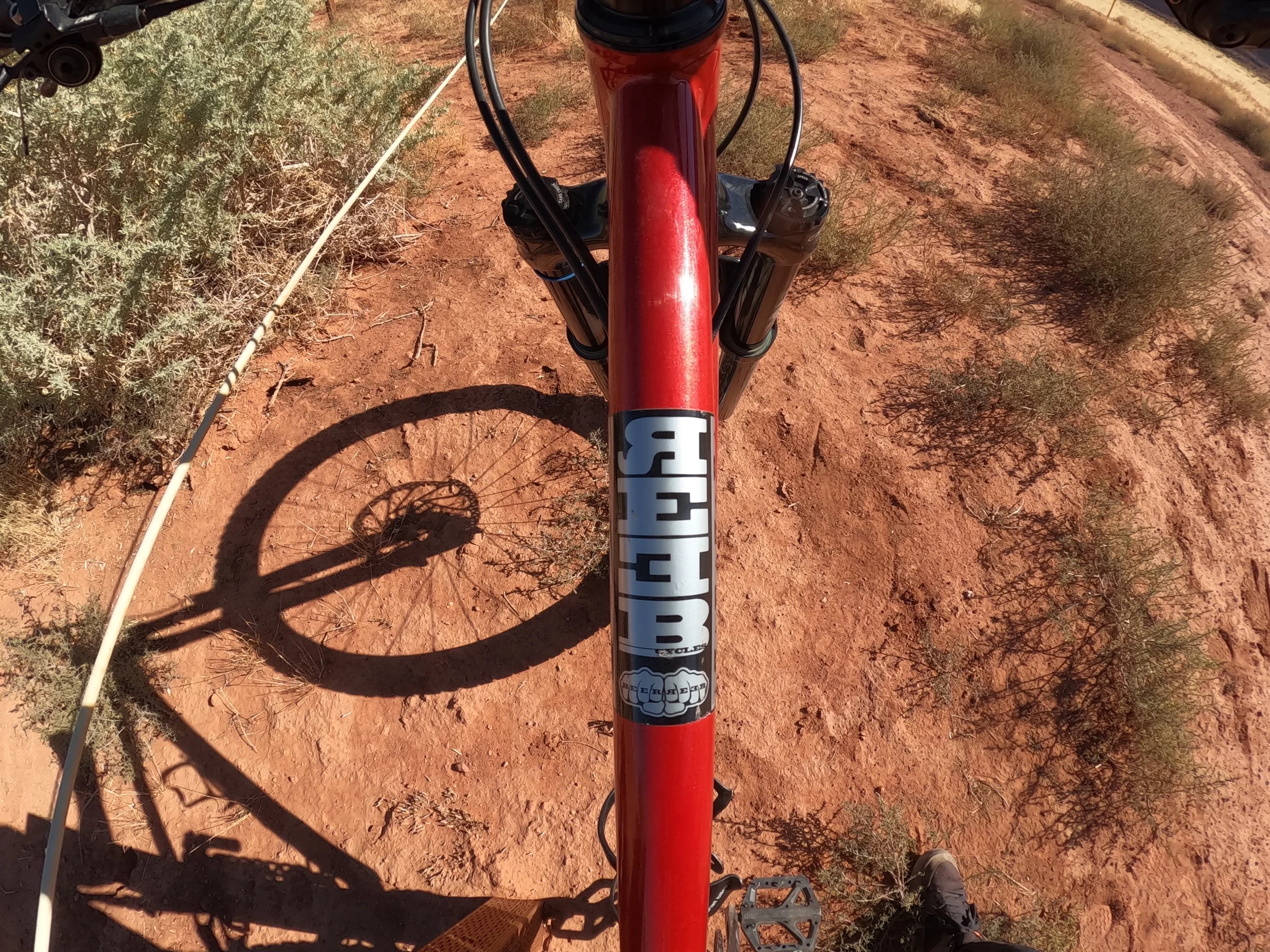
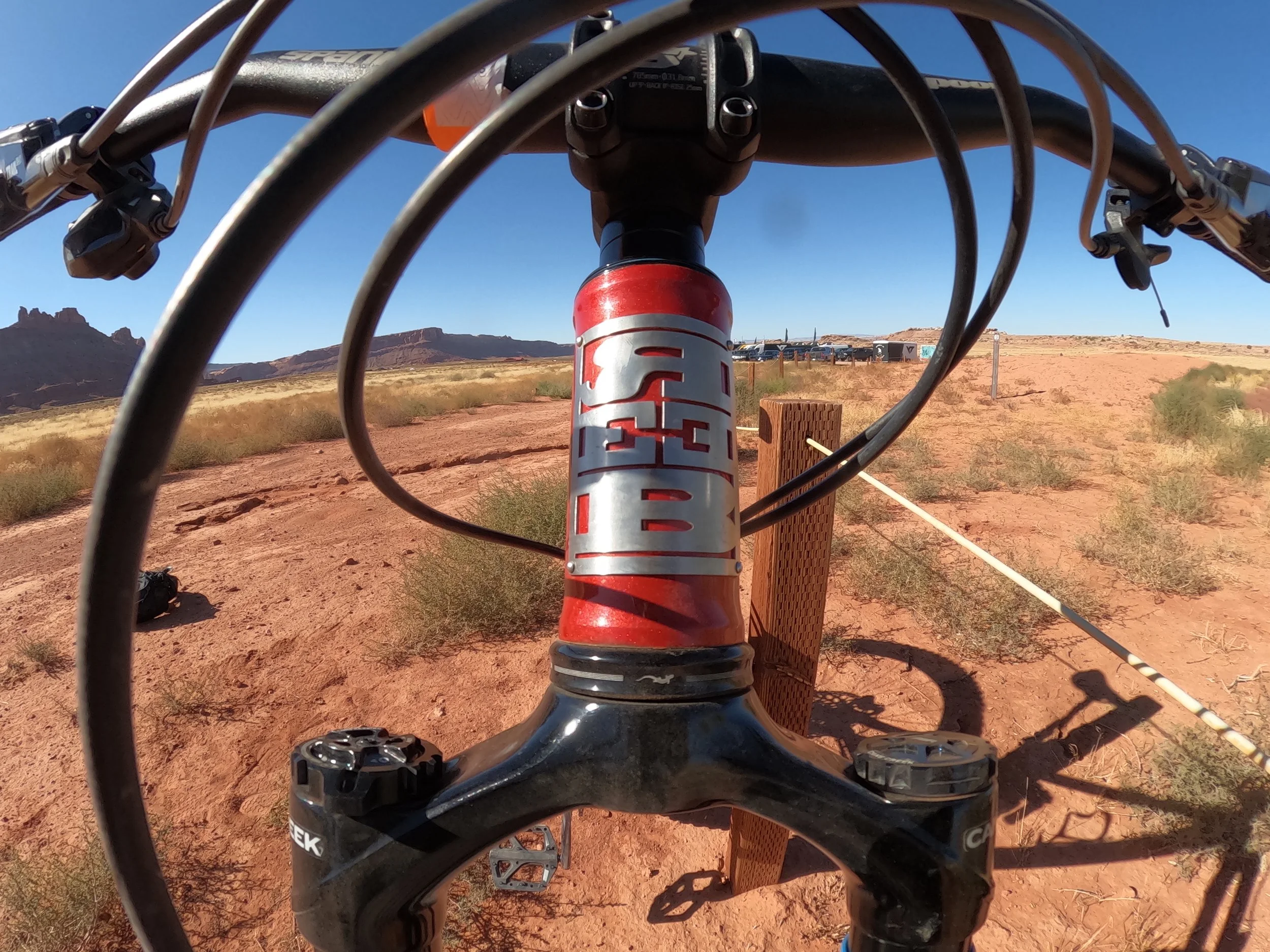
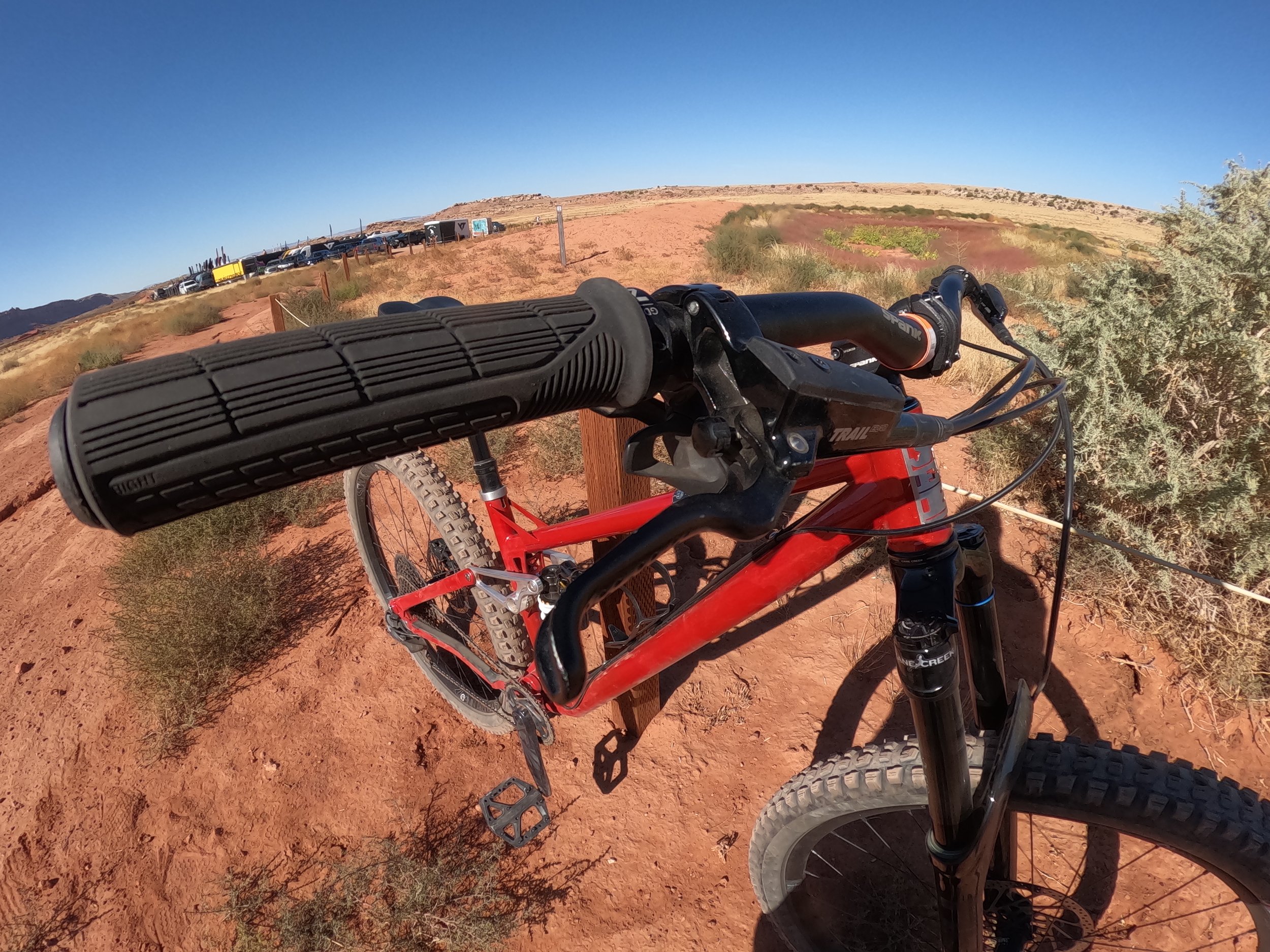
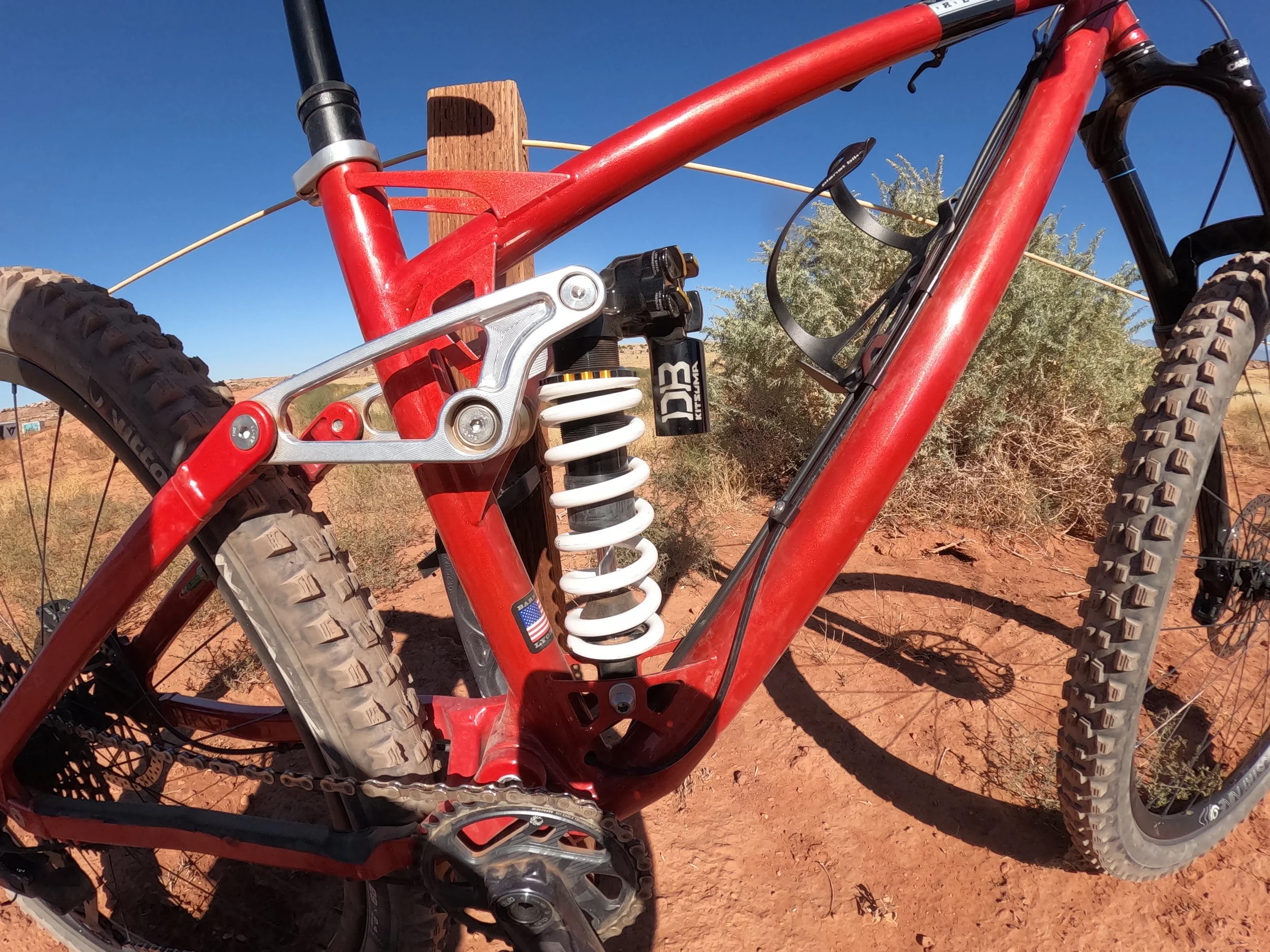

You can check out my YouTube Channel for previous reviews on countless bikes but in the next few weeks I’ll be releasing new Bike Reviews for all of you , so check back soon!!
Stay Stoked and keep peddling!!
SAMTB
How To Buy Your First Mountain Bike | Your SAMTB Guide
One of the most exciting days in the life of a mountain biker is “New Bike Day”. The day you pick up or receive your brand-new Mountain Bike. So, your very first new bike day is by far the most exciting of them all. The day that launches you into this fun and exciting sport.
The path that leads you to that extremely exciting day is often not so exciting and fun. As I’ve experienced on my own adventure to find the right mountain bike, I’ve also watched as friends have struggled and questioned endlessly. What is a “Good” bike for me? What bike should I buy? How much is this going to cost? Where can I try out a bike before I buy it? ALL really good questions!!
I have put together some information here that should help you in your buying decision. This article is geared towards the brand new to the sport enthusiast. Meaning you’ve been bit hard by the mountain biking bug but you're not yet in tune to all the endless nuances of the sport and you don’t know the difference between “Tubeless and Clipless”.
I’m going to go over a plethora of information, there is also a video to go along with this article to clarify some terms and concepts. Hopefully, this is helpful and can better explain some of the info I share with you here.
Buying the right bike will depend on several factors including but not limited to your local Topography, Skill Level, Budget and your reason for wanting to ride.
The first place to start is to understand that there are several types of mountain bike categories. This will help you zone in on what type of riding and what type of trails are most common.
There are 5 categories of mountain biking:
(there are endless subcategories and super special niches we will not mention here)
XC- Cross Country refers to lightweight bikes with low knob tires. They focus on speed and nimbleness as well as a firmer ride due to a shorter fork travel. In general, 80mm - 130mm (about 5.12 in) front fork travel is common for a XC bike. The terrain they ride is usually flatter and not in a very mountainous area. XC Bikes are tuned for racing but also make great bikes if you live someplace without a great deal of elevation. (Generally Speaking)
Trail – An extremely broad category in the sport, general trail riding is just as the name implies. This can take place in any terrain, from mountains to seaside trails. Generally, not a very extreme focused exercise but more of a leisurely experience. “Trail” bikes can be either Full Suspension or a “hard tail” (Hardtail refers to a bike without a rear suspension shock absorber.) The Front fork suspension can range from 120mm-140mm for the common trail bike.
All Mountain - Is a newish designation of mountain bikes. This is a category of bikes that blur a lot of lines. Many bikes consisting of a wide range of travel and specifications can fall into this category. I kind of feel like this was a category invented my Bike Manufacturers marketing departments to sell the “One Bike” concept. “All mountain” bikes look to satisfy a broad spectrum of riders’ needs. Bike weights can range from just a little heavier than an XC bike to just as heavy as an Enduro Bike. Fork Travels also range anywhere from 120mm (about 4.72 in) – 150mm (about 5.91 in). This is where most people end up frustrated when searching for mountain bikes. Trails that are described as All Mountain can range from a smooth, flowy green trail to a fast and technical Blue Trail.
Enduro – This is a challenging and fun category involving a hilly to mountainous terrain. Mountain Bikes in this category are robust and capable. Full suspension bikes with greater travel, ranging from 150mm – 180mm (about 7.09 in) is common. These bikes are heavier and are often made of carbon fiber or aluminum. The trails are more challenging, usually involving rugged steep terrain, technical features, jumps, drops, wood features called walls or skinnies.
Downhill – Just as the name implies, this involves fast, steep, challenging trails. The bikes used on these trails usually have 200mm (about 7.87 in) or greater travel, they are full suspension bikes that are specifically designed for going down hill. These bikes are heavy and not made for peddling uphill. If you’d like to demo a downhill bike, the best place to find them is at a Mountain Bike Park.
One unique feature of downhill specific bikes is their rear cassette (the gears attached to the rear wheel hub) has fewer gears, usually limited to a 9-10 speed with smaller gear rings. This would be great for a bike park with a shuttle up lift service.
(Side note, mountain bike trails are designated by color to indicate their level of difficulty;
Green is a beginner Trail; it is easy flowing and lacks challenging features. Blue is more technical or challenging, You can expect more of a grade to the trail as well as small features with an optional line to avoid the feature all together. Black trails are difficult and possibly dangerous, often involving challenging features such as large jumps, big drops, and other technical challenges. Double Black, is an Advanced or Pro line.)
Now that you have some understanding of the bike categories you can begin to form a clearer picture of what your bike might look like or at least what category of bike you should be looking for.
Sizing – The question of sizing of a bike has been a point of great debate. As bike geometries have morphed into longer and lower bike designs, sizing has become more complicated. Companies like Santa Cruz and Specialized have moved away from Sizing bikes by the traditional Small, Medium, Large method. These companies have adopted an individualized sizing chart to better fit their bikes to their customers.
For example, Specialized sizing ranges from S1 – S6, hoping to better fit a rider’s body build.
In terms of sizing, you need to take terrain and the type of riding into account. As an example, if you intend on riding down big mountains really fast, you want a longer slacker bike. On the other hand, if you like tight, technical trails, you would be better off with a shorter wheelbase and possible sizing down. This all leads us into the next topic, Demoing Bikes before you buy.
Demos - As you continue on your endless search for your dream bike, you will undoubtedly notice that some bikes look very different than others. Try not to be distracted by look. If you really want to find the right bike, you need to ride a variety of bikes in the category that fits your local trails. Get out and ride some demo bikes. Check with your friends and your local bike shop. See who offers demos and if there is a mountain bike festival in your area. Events like the Sedona Mountain Bike Festival and OuterBike are designed for you to get some time on a bike and compare several bikes in a single day or over an entire weekend.
Budget - Now that you have some understanding of terrain and you’ve ridden and compared several bikes, you are ready to get down to the tough part, BUDGET! I can’t tell you how much to spend or how much is too much. I can suggest that you avoid any department store bikes. If a hardtail is what you’re looking for, then you could get away with spending just under $1,000. Don’t go for the absolute top of the line model for your first bike. Pick somewhere in the mid range of whatever bike brand and model you’re looking to buy. It is safe to assume you could spend somewhere between $2000 - $6000.
(Sorry, I don’t set the prices, I’m just the messenger)
You now have the magical trifecta of elements needed to make an informed and educated purchase. Terrain, Trial (Demos) and Budget, these three pieces of the puzzle should guide you to your first New Bike Day!
Here are some helpful terms you will hear as you begin your bike buying journey:
Geometry: Mountain bike geometry refers to the specific measurements and angles of a bike frame that affect its handling characteristics, such as the length of the top tube, seat tube angle, and chain stay length. These characteristics are what make a bikes “ride” unique and often why riders become committed to one brand of bike over another.
Slack: In mountain biking, "slack" commonly refers to a relaxed or laid-back head tube angle. A slack geometry contributes to stability on descents and provides a more planted feeling when tackling steep and technical terrain.
Fork: The fork on a mountain bike is like the bike's front suspension system, typically featuring telescoping legs with air or coil springs to absorb bumps and impacts on the trail, allowing for a smoother and more controlled ride.
Shock: The shock, often located at the rear of a mountain bike, complements the front fork by providing rear suspension. It absorbs impacts, enhances traction, and helps maintain contact with the ground, ensuring a comfortable and efficient ride over rough terrain.
Cassette: The cassette is the cluster of sprockets mounted on the rear wheel hub, and it contains multiple gears that a rider can shift through. Mountain bikers rely on a wide-range cassette to tackle various terrains, allowing them to effortlessly switch between easy climbing gears and high-speed descending gears.
Headtube Angle: The headtube angle refers to the angle at which the front fork is positioned in relation to the bike's frame. A steep headtube angle results in a more nimble and responsive bike suitable for technical climbs and tight corners, while a slacker angle provides stability for high-speed descents and aggressive downhill riding.
Dropper: A dropper seat post is an adjustable seat post that allows riders to lower or raise their saddle height with the push of a button, enhancing maneuverability and control during descents and technical sections.
Tubeless: Tubeless tires are a popular choice and highly preferred among Mountain Bikers, as they eliminate the need for inner tubes and allow riders to run lower tire pressures, reducing the risk of pinch flats and improving traction.
Clipless: Clipless pedals are a type of pedal system used in mountain biking where riders attach specialized cleats on their shoes to the pedal, offering a secure connection and improved pedaling efficiency.
Flats: Flat pedals are pedals without any form of retention system, allowing riders to place their feet freely on them. They are preferred by some mountain bikers for their simplicity and ease of use, particularly in technical terrain or when perfecting skills like bunny hops.
Group Sets - Mountain bike group sets, such as those offered by SRAM and Shimano, are critical components that encompass the drivetrain, brakes, and associated parts, ensuring a bike's performance and functionality. SRAM and Shimano are two major players in the mountain biking world, each with its own distinct characteristics.
SRAM: SRAM's group sets are known for their innovative designs and lighter weight. Their flagship XX1 and X01 Eagle series are popular among enthusiasts and professionals, featuring 1x12 drivetrains with wide gear ranges, precise shifting, and a focus on simplicity. SRAM also offers the GX and NX series, which bring 1x drivetrains to a wider audience.
Shimano: Shimano group sets are celebrated for their durability and precise engineering. The XT and XTR series are Shimano's high-end offerings, providing reliable 1x12 drivetrains and powerful brakes. Shimano's brakes, such as the XT and XTR, offer dependable performance and easy maintenance.
Ultimately, the choice between SRAM, Shimano, or alternative brands often comes down to personal preferences, riding style, and budget. Riders should consider factors like gear range, weight, and ergonomics to find the group set that suits their needs best.
Bike Shops - Your local bike shop can be a vital resource in your search for your new bike. Additionally, you should develop a relationship with your local bike shop and bike mechanic to ensure your new bike gets the proper care it needs. Check with the bike and components manufacturers for maintenance requirements.
Because I know you still have endless questions, I’m leaving you with a list of bikes I would suggest for you to look at based on the 5 categories I previously mentioned. Feel free to send any questions you have my way and I’ll answer the best I can as quickly as possible.
Below are some examples of the top bikes in each category discussed above.
XC – Scott Spark RC - www.scott-sports.com
Ibis Exie - www.ibiscycles.com
Trail - Jamis Portal - Jamis Bikes
Reeb SST - www.reebcycles.com
All Mountain – Trek Fuel EX 8 - Trek.com
Ibis Ripley – www.ibiscycles.com
Enduro - Devinci Spartan - Devinci
Ibis Ripmo - Ripmo
Commencal Meta - Meta SX V5
Downhill - Santa Cruz V10 - Santa Cruz
Commencal Supreme DH V5 - Commencal
**You may have noticed that I did not mention E-Bikes in this article. The recent introduction and availability to E-Bikes has created a whole new world for mountain bikers and they deserve their very own article. Check back soon for a new article on E-Bikes.
Written by Stephen Alexander – 09/23
Getting Started in Mountain Biking
It all begins with an idea.
Mountain biking was once a niche, extremist sport relegated to the likes of daredevils and RedBull chugging thrill seekers, however that has all changed. Since sometime around 2015 the sport has grown to reach the interest of anyone from housewife’s and corporate executives and even dentists.
Today Mountain biking has become a main stream sport enjoyed by
millions of people all around the world.
How to get started in Mountain Biking 101. A foolproof guide to getting out on the trails with all the essentials.
So lets jump into this and talk about how you can get into mounting biking. First let’s dispel a few misconceptions about mountain biking.
You must live in the mountains to enjoy the sport. — Mostly False, you can enjoy mountain biking almost anywhere now a days. XC or Cross Country Mountain biking and Trail Riding is all about speed over a distance, not about mountains.
This is a young person’s sport. — the average age of riders today is around 35 years old.
Getting started in mountain biking can be overwhelming so here are the essentials to get you safely on the trails and your first ride.
HELMETS
Your very first purchase should be a quality helmet. Before you buy anything else, get a helmet. Get a good helmet, I wear a POC Kortal Race, mountain bike helmet. It is comfortable, well ventilated and come with top safety marks.
A helmet is the most critical piece of gear for any mountain biker. It provides protection for your head in case of falls or collisions, reducing the risk of serious head injuries. Safety should always be the top priority when selecting a helmet. In most every state and county park in the United States, you are required to wear a helmet to ride the trails. I’ve had a few really hard crashes and I was always glad I was wearing a helmet.
Recommendations:
•POC Kortal Race MIPS - My Everyday Helmet
Bonus Fullface Helmet - LEATT 3.0 V23 Enduro - My Fullface
(Certification - Look for helmets that meet safety standards and rating such as MIPS (Multi-directional Impact Protection System ) CPSC (Consumer Product Safety Commission) or ASTM (American Society for Testing and Materials). These certifications ensure that the helmet has passed rigorous safety tests.)
SHOES
Next up we head to the opposite end of your body, Shoes! Mountain bike shoes are specially made for riding on spiked peddles. Mountain Bike shoes have a soul with a special composition to grip the pegs on your peddles. They ares differ then regular sneakers as well as having a tough exterior and a multi layered density soul to give good support to your feet.
Mountain bike shoes come with different sole types:
Flat Pedal Shoes: These have a flat sole with grippy rubber to provide maximum contact with flat pedals.
Clipless Shoes: These shoes have cleats that attach to compatible pedals, offering a secure connection and efficient power transfer.
Recommendations
My favorites Mountain Bike Shoes are the FiveTen FreeRider’s. I’ve tried a bunch of different shoes and I love the FiveTens. (Bonus, they are reasonably priced)
Knee Pads
Number three is Knee Pads, chances are pretty good that you will have a minor/ish crash as you get started and maybe more often than you expect. It’s goes along with the nature of the sport. A good pair of knee pads will help protect you from injury and give you a sense of confidence when attempting new features and skills such as jumps and drops.
Recommendations.
• Pearl Izumi Elevate Knee Pads as my personal favorite.
Fox Racing Launch Pro D3O Knee Guard: Offers excellent protection and comfort with the use of D3O impact-absorbing material.
Gloves
You only make contact with you bike at 2 to 3 points, You’re hands, feet and sometimes your butt. So a good pair of riding gloves are just as important as Riding Shoes. It is a fact that when your grips get wet and slimy they become slippery. Bare hands are not particularly good at gripping slippery grips, and this can be very dangerous. A good pair of gloves like the TASCO Ridgeliners will keep your hand firmly connected to you grips.
Recommendations
• Tasco Dawn Patrol (Cold Weather Riding)
• DirtPaw MTB Gloves - Great Alternative
The next two items we’ll talk about are Jerseys and Shorts, they can become an endless rabbit hole of options and personal preferences. So I’m going to stay close to the most simple and absolute examples for each of them.
Jerseys
Mountain biking jerseys are designed to wick moisture away from your body and provide comfort during rides. They often feature unique designs and graphics, allowing riders to express their style. Look for jerseys made from moisture-wicking, quick-drying, and breathable materials to keep you cool and dry. Even on cold morning you will heat up quickly, so it’s just as important on cool days and hot days to wear well ventilated, wicking clothing. Choose a jersey that fits comfortably and provides freedom of movement. Some riders prefer a loose fit, while others prefer a more tailored fit..
Recommendations
• Tasco Fantom Trail Jersey - The Best I’ve ever worn!
• KETL MTB Jerseys: ** Awesome variety of Jerseys with a lifetime guarantee. ** Comfortable, Well Ventilated, Cool Designs
Troy Lee Designs Skyline Jersey: Offers a comfortable fit and a stylish design.
Fox Racing Ranger Jersey: A versatile and affordable option for all types of riders.
Shorts
Mountain biking shorts are designed to provide comfort, freedom of movement, and protection during rides. They come in various styles, including baggy and form-fitting options. Look for shorts made from durable and moisture-wicking materials. Some shorts also include stretch panels for enhanced mobility. Consider shorts with a removable or integrated liner with padding called a chamois, for extra comfort during long rides.. You’ll thank me later.
Recommendations
• TASCO Fantom Ultrulite Shorts: Keep you cool and looking good. ** My new favorites, **
• KETL Skidmarks Shorts: Lifetime repair, stretchy, durable and they look awesome too!!
Leatt 4.0 -5.0: Offers maximum durability, comfortable fit and versatile style options.
Troy Lee Designs Skyline Shorts: A popular choice known for durability and comfort.
Finally a Bonus item.
Hip or Back Packs
Using a hip pack and a backpack designed to carry water while mountain bike riding offers a range of benefits that enhance both safety and enjoyment during your outdoor adventures.
Hydration on the Go: One of the most significant advantages is easy access to hydration. With water reservoirs integrated into these packs, you can sip water without having to stop or reach for a water bottle, ensuring you stay properly hydrated throughout your ride.
Enhanced Comfort: These packs are designed for ergonomic comfort. Hip packs sit snugly around your waist, distributing the weight evenly and reducing strain on your back. Backpacks with hydration reservoirs feature padded shoulder straps and breathable materials for added comfort during long rides.
Increased Storage: These packs often come with additional compartments and pockets, allowing you to carry essential gear, tools, snacks, and first-aid supplies. This added storage ensures you're well-prepared for various riding conditions.
I’ve recently switch to the EVOC Hip Pack after several other name brand packs failed to deliver on quality and longevity.
Recommendations
There you go! Now hit the trails, remember to ride within your ability. I know that sounds kind of boring but it is a great way to ensure you keep advancing your riding skills and don’t end up on the sidelines in a cast for the next 4 months!!
You can ask questions about any of the products I mentioned or about anything else related.
Enjoy the Ride!
Stephen




